Friday, 30 November 2018
Syska launches Smart Plug and Wi-Fi Spike Buster, price starts Rs 2,599
After entering the smart home segment recently, Syska Group has announced the launch of two smart products: Syska Smart Plug with Power Meter and Syska Wi-Fi Spike Buster.from Gadgets Now https://ift.tt/2Q6ZmE0
via IFTTT
Facebook expands tool to connect users to local news
Facebook has started expanding its "Today In" section for local news and community information.from Gadgets Now https://ift.tt/2TSRfJg
via IFTTT
Facebook invests $1 million to boost computer education among minorities
The social networking giant announced an investment of $1 million in CodePath.org to boost computer science education among underrepresented minorities and women.from Gadgets Now https://ift.tt/2AAwF7s
via IFTTT
Honor 8C launched at Rs 11,999: How it compares to Realme U1 and Xiaomi Redmi Note 6 Pro
from Gadgets Now https://ift.tt/2TXcKbN
via IFTTT
Paytm chief eyes dominance in Japanese market as ticket to US
After becoming an almost household name in India, digital payments major Paytm has set its sight on dominating the Japanese market.from Gadgets Now https://ift.tt/2Rn9wwD
via IFTTT
South Korea indicts group for allegedly leaking Samsung flexible display tech to Chinese company
Prosecutors in South Korea have indicted the chief executive and eight other employees of Toptec Co for allegedly selling information about Samsung’s flexible OLED displays to a Chinese company. The charges detail that the company received more than $13.8 million for the information, Bloomberg reports.
Toptec, a Samsung supplier that manufactures display-related equipment, has denied the charges in a statement. “Our company has never provided Samsung Display’s industrial technology or business secrets to a Chinese client. Our company will fully cooperate with legal proceedings to find the truth in court.” The company’s share price is down 20 percent at the time of writing.
Samsung’s flexible display tech probably makes you think of their weird and yet-to-be-released foldable phone that they just showed off earlier this month. Samsung’s been deep in the flexible display business for a while though even if their bends have been less acute like the designs of much older handsets like the Galaxy S6 Edge.
The Chinese company was not named in the suit though there are a number of companies working to produce flexible displays for smartphones.
South Korea’s national interests are deeply intertwined with the business dealings of Samsung, and the threat of intellectual property theft to China is one which they seem to be taking very seriously. We have reached out to Samsung for comment.
from TechCrunch https://ift.tt/2KIfENE
Hulu with Live TV adds Discovery Networks programming to its core and add-on packages
In September, Hulu and Discovery announced a partnership for live and on-demand programming that would see Discovery’s content coming to Hulu’s streaming service. Today, as promised, those channels are going live with the launch of Discovery Networks programming across all of Hulu with Live TV packages.
That means Hulu with Live TV subscribers will now have access to five new channels in the core package, including Discovery, TLC, Motor Trend, Animal Planet and ID. This is the first time the content from these networks has been available live on Hulu’s service.
Hulu’s on-demand service subscription plan, however, offers a number of library episodes from the networks, including shows from Food Network, TLC and HGTV.
In addition to the expansion of the core package, Hulu’s new add-on bundles focused on Entertainment and Spanish programming are being expanded with Discovery Networks content, as well.
Earlier this month, Hulu announced the launch of these two new add-ons, which are small bundles of channels subscribers can opt to add on top of their core package. The $4.99 per month “Español” add-on, for example, offers live news and sports networks, including ESPN Deportes, NBC Universo, CNN En Español and History Channel En Español.
Now, it will include Discovery en Español and Discovery Familia as a result of the Hulu-Discovery partnership.
Meanwhile, the $7.99 per month Entertainment add-on has been offering live network feeds of LMN (Lifetime Movie Network), FYI, DIY Network, Cooking Channel and CNBC World.
It now gains Destination America, Discovery Family, Science, Discovery Life and AHC thanks to the deal.
Combined, the new channels bring a variety of popular lifestyle content to Hulu’s Live TV service, including shows like Fixer Upper, Chopped, 90 Day Fiancé, Naked and Afraid, Cupcake Wars, Deadliest Catch, Property Brothers, Alaskan Bush People and House Hunters, for example.
These sorts of home improvement shows and other light reality fare is something that on-demand services, like Netflix, haven’t quite caught up to. Netflix more recently has been rolling out originals like Nailed It! and Sugar Rush in the competition cooking space to help engage the reality TV audience, but hasn’t really had a breakout hit in the home improvement space.
Not doing more in reality TV could be to Netflix’s disadvantage. Hulu’s data has shown this content is often heavily binged, with one-third of Alaskan Bush People’s audience binge-watching the entire series, for instance.
And on Sundays, viewers are streaming multiple episodes of the other titles, it says, including 90 Day Fiancé, Property Brothers, House Hunters, Fixer Upper, Deadliest Catch, Naked and Afraid, Chopped and Cupcake Wars. The latter, Cupcake Wars, also saw its audience streaming 50 percent more hours this year than the last, the company noted.
from TechCrunch https://ift.tt/2Skc9iJ
AWS launches a managed Kafka service
Kafka is an open-source tool for handling incoming streams of data. Like virtually all powerful tools, it’s somewhat hard to set up and manage. Today, Amazon’s AWS is making this all a bit easier for its users with the launch of Amazon Managed Streaming for Kafka. That’s a mouthful, but it’s essentially Kafka as a fully managed, highly available service on AWS. It’s now available on AWS as a public preview.
As AWS CTO Werner Vogels noted in his AWS re:Invent keynote, Kafka users traditionally had to do a lot of heavy lifting to set up a cluster on AWS and to ensure that it could scale and handle failures. “It’s a nightmare having to restart all the cluster and the main nodes,” he said. “This is what I would call the traditional heavy lifting that AWS is really good at solving for you.”
It’s interesting to see AWS launch this service, given that it already offers a very similar tool in Kinesis, a tool that also focuses on ingesting streaming data. There are plenty of applications on the market today that already use Kafka, and AWS is clearly interested in giving those users a pathway to either move to a managed Kafka service or to AWS in general.

As with all things AWS, the pricing is a bit complicated, but a basic Kafka instance will start at $0.21 per hour. You’re not likely to just use one instance, so for a somewhat useful setup with three brokers and a good amount of storage and some other fees, you’ll quickly pay well over $500 per month.
from TechCrunch https://ift.tt/2Q7wWd2
Analysts are still bullish on wearables
New numbers from Gartner this morning show solid projections for the wearable market, in spite of a few relatively lackluster years following the category’s initial explosion. The drivers for the projected growth should be no surprise to anyone who has been following it of late — namely smartwatches and ear-worn devices (the unfortunately named hearables).
Overall, Gartner his predicting a jump in shipments in excess of 25 percent in 2019, up to 225 million, from 179 million. That number is expected to continue to increase all the way up to 453 million by 2022.
Smartwatches — led by Apple, Samsung and relatively recent entrant Fitbit — are a key factor, growing from 53 million units shipped to 74 million, and then up to 115 million by 2022. Impressive, if it plays out accordingly, though interestingly, average selling price is expected to drop over that time frame by ~$11 per device.
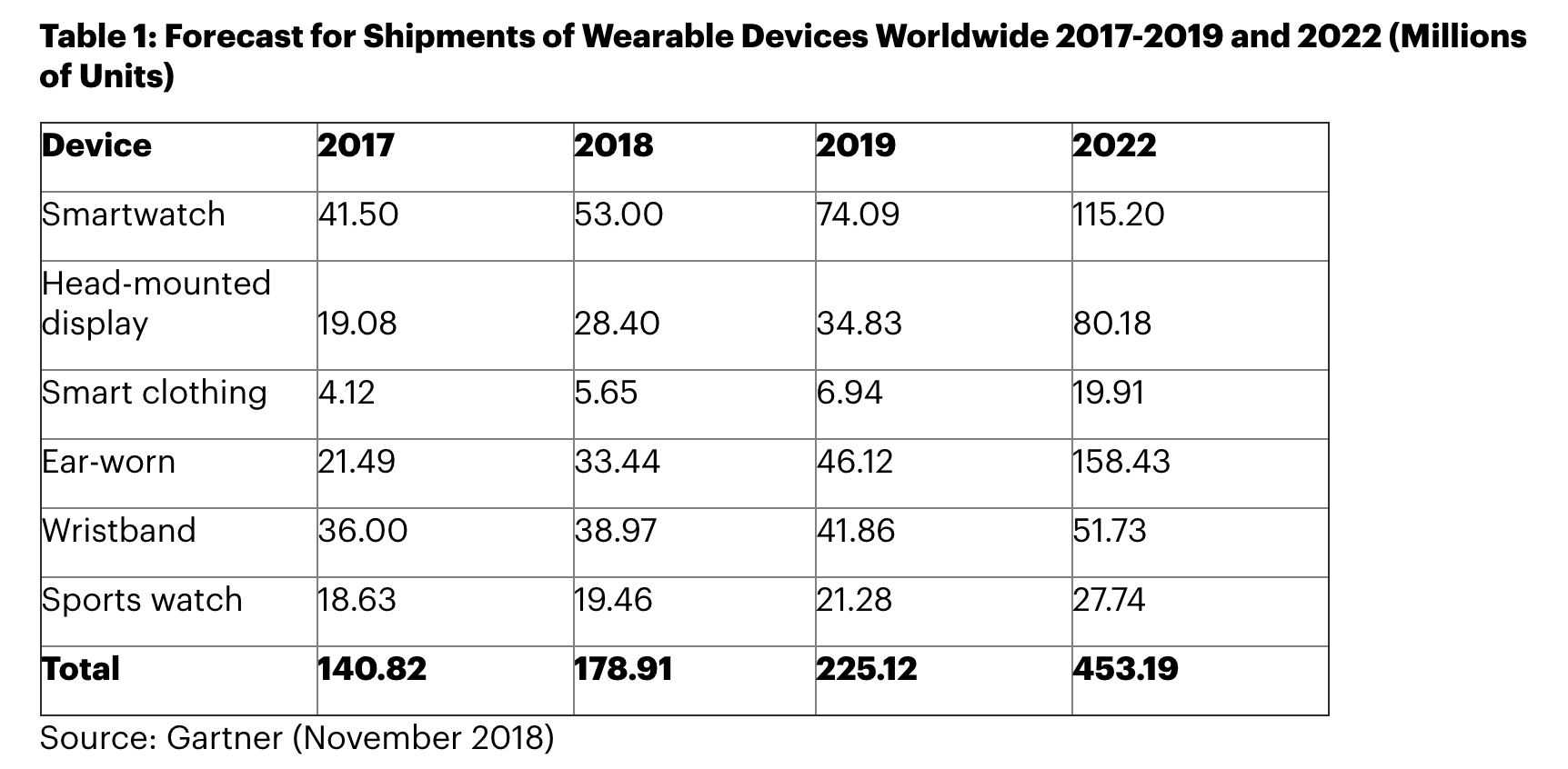
That’s a product of lower-priced competition for the industry-leading Apple Watch. We’ve already seen Fitbit undercut the competition pretty dramatically with the $150 Versa. How that will square with costlier health components like Apple’s ECG, however, remains to be seen.
Ear-worn devices — namely Bluetooth earbuds like Apple’s AirPods and Samsung’s IconX — are the other big driver. Gartner suggests they’ll account for nearly one-third of the wearables market by 2022.
from TechCrunch https://ift.tt/2QnYWZc
Cruise Automation taps GM president Dan Ammann as its new CEO
Cruise Automation, the self-driving car subsidiary of GM, is getting a new CEO.
The autonomous vehicle company, which was acquired by GM in 2016 and became subsidiary GM Cruise, has tapped Dan Ammann as CEO. Ammann (shown on the right in the photo above) will step down as GM’s president, a role he’s held since January 2014.
Kyle Vogt, a Cruise co-founder who was CEO and also unofficially handled the chief technology officer position, is staying with the company. Vogt will now become president and CTO. The changes take effect January 1, 2019.
The executive-level shuffling makes sense for Cruise, which has transformed from a small startup with 40 employees to more than 1,000 today at its San Francisco headquarters. And it continues to expand as the company prepares to launch a commercial robotaxi business in 2019.
Cruise recently announced plans to open an office in Seattle and staff it with up to 200 engineers. And with the recent investments by SoftBank and Honda, which has pushed Cruise’s valuation to $14.6 billion, it has the runway to get even bigger. Vogt can focus on the tech and Ammann can build out and manage the business.
Ammann was at the center of GM’s initial investment and acquisition of Cruise. He oversaw GM’s relationship with Cruise. And he’s a person with whom Vogt has regular contact, something he mentioned while onstage at SF Disrupt in September.
Ammann also comes with a specific skill set. When Ammann first joined GM in 2010 as vice president of finance and treasurer, his first task was to manage GM’s initial public offering. This could signal a future move by the company.
“Dan’s been my partner since General Motors’ initial investment in Cruise and I am thrilled he has agreed to join us full-time,” said Vogt. “Dan’s thorough understanding of our mission and his operational expertise make him the perfect fit to lead Cruise into commercial deployment.”
“I’m excited to dedicate 100 percent of my time and energy to helping Kyle and the entire team realize our mission of deploying this technology at scale,” Ammann said in a statement provided to TechCrunch.
GM’s global regions and GM Financial will now report directly to GM Chairman and CEO Mary Barra.
from TechCrunch https://ift.tt/2BGlc8h
Lyft’s pink-wheeled shareable bikes will be available to rent soon
Lyft has finally given us a glimpse of its forthcoming line of shareable bikes, which the ridesharing company says will be available to rent within its mobile app in select cities “soon.”
The news comes as the $15 billion company announces the final close of its acquisition of Motivate, the New York City-based mobility startup that owns a number of bike-rental services, like Citi Bike, Ford GoBike, Divvy, Blue Bikes and Capital Bikeshare. The transaction was reportedly worth some $250 million.
Lyft brought in $600 million in fresh funding in June from backers Fidelity Research & Management, AllianceBernstein, Baillie Gifford, KKR, CapitalG, Rakuten and others.
Now that its bike deal is complete, Lyft becomes the largest bike service provider in the U.S. That’s a big leap forward for a company that hopes to have the largest dockless bike fleet in the world — outside of China, of course, where companies like Mobike have deployed millions of bikes.
[gallery ids="1752664,1752665,1752666"]As part of the deal, Lyft will invest $100 million in New York’s Citi Bike, tripling the number of bikes available to 40,000 by 2023.
Lyft launched its first fleet of scooters earlier this year in Denver, hot off the heels of scooter-mania, which saw companies like Bird and Lime garner billion-dollar valuations and complete launches all over the world.
The company says the scooters have been a success thus far. In Denver, for example, 15 percent of Lyft rides in 2018 were taken on scooters. The company has also made scooters available to rent within its app in Santa Monica and Washington, DC — a list that will undoubtedly swell in 2019.
Here’s hoping Lyft’s bike wheels are actually pink. If not, I will be gravely disappointed.
from TechCrunch https://ift.tt/2Av7hjE
The crusade against open-source abuse
There’s a dark cloud on the horizon. The behavior of cloud infrastructure providers, such as Amazon, threatens the viability of open source. I first wrote about this problem in a prior piece on TechCrunch. In 2018, thankfully, several leaders have mobilized (amid controversy) to propose multiple solutions to the problem. Here’s what’s happened in the last month.
The Problem
Go to Amazon Web Services (AWS) and hover over the Products menu at the top. You will see numerous open-source projects that Amazon did not create, but run as-a-service. These provide Amazon with billions of dollars of revenue per year. To be clear, this is not illegal. But it is not conducive to sustainable open-source communities, and especially commercial open-source innovation.
Two Solutions
In early 2018, I gathered together the creators, CEOs or general counsels of two dozen at-scale open-source companies, along with respected open-source lawyer Heather Meeker, to talk about what to do.
We wished to define a license that prevents cloud infrastructure providers from running certain software as a commercial service, while at the same time making that software effectively open source for everyone else, i.e. everyone not running that software as a commercial service.
With our first proposal, Commons Clause, we took the most straightforward approach: we constructed one clause, which can be added to any liberal open-source license, preventing the licensee from “Selling” the software — where “Selling” includes running it as a commercial service. (Selling other software made with Commons Clause software is allowed, of course.) Applying Commons Clause transitions a project from open source to source-available.
We also love the proposal being spearheaded by another participant, MongoDB, called the Server Side Public License (SSPL). Rather than prohibit the software from being run as a service, SSPL requires that you open-source all programs that you use to make the software available as a service, including, without limitation, management software, user interfaces, application program interfaces, automation software, monitoring software, backup software, storage software and hosting software, all such that a user could run an instance of the service. This is known as a “copyleft.”
These two licenses are two different solutions to exactly the same problem. Heather Meeker wrote both solutions, supported by feedback organized by FOSSA.
The initial uproar and accusations that these efforts were trying to “trick” the community fortunately gave way to understanding and acknowledgement from the open-source community that there is a real problem to be solved here, that it is time for the open-source community to get real and that it is time for the net giants to pay fairly for the open source on which they depend.
In October, one of the board members of the Apache Software Foundation (ASF) reached out to me and suggested working together to create a modern open-source license that solves the industry’s needs.
Kudos to MongoDB
Further kudos are owed to MondoDB for definitively stating that they will be using SSPL, submitting SSPL in parallel to an organization called Open Source Initiative (OSI) for endorsement as an open-source license, but not waiting for OSI’s endorsement to start releasing software under the SSPL.
OSI, which has somehow anointed itself as the body that will “decide” whether a license is open source, has a habit of myopically debating what’s open source and what’s not. With the submission of SSPL to OSI, MongoDB has put the ball in OSI’s court to either step up and help solve an industry problem, or put their heads back in the sand.
In fact, MongoDB has done OSI a huge favor. MongoDB has gone and solved the problem and handed a perfectly serviceable open-source license to OSI on a silver platter.
Open-source sausage
The public archives of OSI’s debate over SSPL are at times informative and at times amusing, bordering on comical. After MongoDB’s original submission, there were rah-rah rally cries amongst the members to find reasons to deem SSPL not an open-source license, followed by some +1’s. Member John Cowan reminded the group that just because OSI does not endorse a license as open source, does not mean that it is not open source:
As far as I know (which is pretty far), the OSI doesn’t do that. They have never publicly said “License X is not open source.” People on various mailing lists have done so, but not the OSI as such. And they certainly don’t say “Any license not on our OSI Certified ™ list is not open source”, because that would be false. It’s easy to write a license that is obviously open source that the OSI would never certify for any of a variety of reasons.
Eliot Horowitz (CTO and co-founder of MongoDB) responded cogently to questions, comments and objections, concluding with:
In short, we believe that in today’s world, linking has been superseded by the provision of programs as services and the connection of programs over networks as the main form of program combination. It is unclear whether existing copyleft licenses clearly apply to this form of program combination, and we intend the SSPL to be an option for developers to address this uncertainty.
Much discussion ensued about the purpose, role and relevance of OSI. Various sundry legal issues were raised or addressed by Van Lindberg, McCoy Smith and Bruce Perens.
Heather Meeker (the lawyer who drafted both Commons Clause and SSPL) stepped in and completely addressed the legal issues that had been raised thus far. Various other clarifications were made by Eliot Horowitz, and he also conveyed willingness to change the wording of the license if it would help.
Discussion amongst the members continued about the role, relevance and purpose of OSI, with one member astutely noting that there were a lot of “free software” wonks in the group, attempting to bastardize open source to advocate their own agenda:
If, instead, OSI has decided that they are now a Free Software organization, and that Free Software is what “we” do, and that “our” focus is on “Free software” then, then let’s change the name to the Free Software Initiative and open the gates for some other entity, who is all about Open Source, to take on that job, and do it proudly. :-)
There was debate over whether SSPL discriminates against types of users, which would disqualify it from being open source. Eliot Horowitz provided a convincing explanation that it did not, which seemed to quiet the crowd.
Heather Meeker dropped some more legal knowledge on the group, which seemed to sufficiently address outstanding issues. Bruce Perens, the author of item 6 of the so-called open-source definition, acknowledged that SSPL does not violate item 6 or item 9 of the definition, and subsequently suggested revising item 9 such that SSPL would violate it:
We’re not falling on our swords because of this. And we can fix OSD #9 with a two word addition “or performed” as soon as the board can meet. But it’s annoying.
Kyle Mitchell, himself an accomplished open-source lawyer, opposed such a tactic. Larry Rosen pointed out that some members’ assertion (that “it is fundamental to open source that everyone can use a program for any purpose”) is untrue. Still more entertaining discussion ensued about the purpose of OSI and the meaning of open source.
Carlos Piana succinctly stated why SSPL was indeed open source. Kyle Mitchell added that if licenses were to be judged in the manner that the group was judging SSPL, then GPL v2 was not open source either.
Groundswell
Meanwhile Dor Lior, the founder of database company ScyllaDB, compared SSPL and AGPL side-to-side and argued that “MongoDB would have been better off with Commons Clause or just swallowed a hard pill and stayed with APGL.” Player.FM released their service based on Commons Clause-licensed RediSearch, after in-memory database company Redis Labs placed RediSearch and four other specific add-on modules (but not Redis itself) under Commons Clause, and graph database company Neo4J placed its entire codebase under Commons Clause and raised an $80 million Series E.
Then Michael DeHaan, creator of Red Hat Ansible, chose Commons Clause for his new project. When asked why he did not choose any of the existing licenses that OSI has “endorsed” to be open source, he said:

This groundswell in 2018 should be ample indication that there is an industry problem that needs to be fixed.
Eliot Horowitz summarized and addressed all the issues, dropped the mic and left for a while. When it seemed like SSPL was indeed following all the rules of open-source licenses, and was garnering support of the members, Brad Kuhn put forward a clumsy argument for why OSI should change the rules as necessary to prevent SSPL from being deemed open source, concluding:
It’s likely the entire “license evaluation process” that we use is inherently flawed.
Mitchell clinched the argument that SSPL is open source with definitive points. Horowitz thanked the members for their comments and offered to address any concerns in a revision, and returned a few days later with a revised SSPL.
OSI has 60 days since MongoDB’s new submission to make a choice:
- Wake up and realize that SSPL, perhaps with some edits, is indeed an open-source license, OR
- Effectively signal to the world that OSI does not wish to help solve the industry’s problems, and that they’d rather be policy wonks and have theoretical debates.
“Wonk” here is meant in the best possible way.

Importantly, MongoDB is proceeding to use the SSPL regardless. If MongoDB were going to wait until OSI’s decision, or if OSI were more relevant, we might wait with bated breath to hear whether OSI would endorse SSPL as an open-source license.
As it stands, OSI’s decision is more important to OSI itself than to the industry. It signals whether OSI wants to remain relevant and help solve industry problems or whether it has become too myopic to be useful. Fearful of the latter, we looked to other groups for leadership and engaged with the Apache Software Foundation (ASF) when they reached out in the hopes of creating a modern open-source license that solves the industry’s needs.
OSI should realize that while it would be nice if they deemed SSPL to be open source, it is not critical. Again in the words of John Cowan, just because OSI has not endorsed a license as open source, does not mean it’s not open source. While we greatly respect almost all members of industry associations and the work they do in their fields, it is becoming difficult to respect the purpose and process of any group that anoints itself as the body that will “decide” whether a license is open source — it is arbitrary and obsolete.
Errata
In my zest to urge the industry to solve this problem, in an earlier piece, I had said that “if one takes open source software that someone else has built and offers it verbatim as a commercial service for one’s own profit” (as cloud infrastructure providers do) that’s “not in the spirit” of open source. That’s an overstatement and thus, frankly, incorrect. Open source policy wonks pointed this out. I obviously don’t mind rattling their cages but I should have stayed away from making statements about “what’s in the spirit” so as to not detract from my main argument.
Conclusion
The behavior of cloud infrastructure providers poses an existential threat to open source. Cloud infrastructure providers are not evil. Current open-source licenses allow them to take open-source software verbatim and offer it as a commercial service without giving back to the open-source projects or their commercial shepherds. The problem is that developers do not have open-source licensing alternatives that prevent cloud infrastructure providers from doing so. Open-source standards groups should help, rather than get in the way. We must ensure that authors of open-source software can not only survive, but thrive. And if that means taking a stronger stance against cloud infrastructure providers, then authors should have licenses available to allow for that. The open-source community should make this an urgent priority.
Disclosures
I have not invested directly or indirectly in MongoDB. I have invested directly or indirectly in the companies behind the open source projects Spring, Mule, DynaTrace, Ruby Rails, Groovy Grails, Maven, Gradle, Chef, Redis, SysDig, Prometheus, Hazelcast, Akka, Scala, Cassandra, Spinnaker, FOSSA, and… in Amazon.
from TechCrunch https://ift.tt/2QnTLse
Nielsen: Americans are streaming 8 billion hours of content per month on connected TVs
With the rise of streaming services and the trend toward cord cutting, the way U.S. consumers are watching video is also changing. Today, more than two-thirds of U.S. homes have devices that are able to stream video, according to Nielsen. In a new report out this morning, the measurement firm looked at the impact these services are having on the “connected living room” experience, noting also that Americans are now streaming nearly 8 billion hours per month on connected TV devices like Roku, Apple TV and Amazon Fire TV.
What’s more is that consumers ages 13 to 34 will spend twice the time streaming when watching on connected TV devices, compared with watching on the computer or mobile devices.
Specifically, Nielsen says that consumers 13 and older were streaming an average of more than an hour per day, versus 36 minutes on the computer and 24 minutes on mobile devices, like smartphones and tablets.
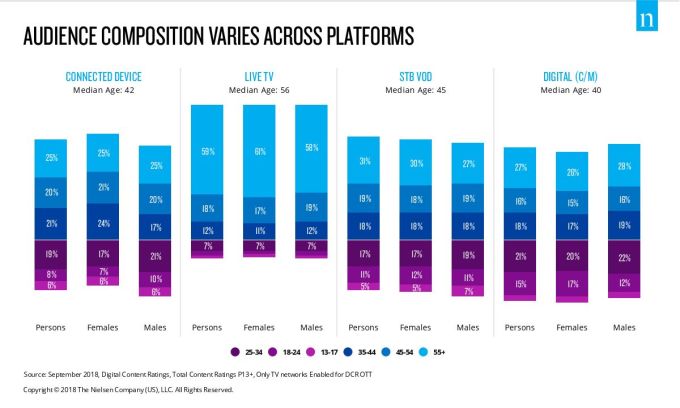
The firm also noted there’s an opportunity for live TV networks to better reach a younger demographic by making more of their video content available through connected TV devices.
Today, only 3 percent of live TV viewers across the top 5 TV networks are between the ages of 18 and 24 — an implication that the youngest consumers have turned away from traditional TV viewing.
Meanwhile, 8 percent of that demographic watches content through a connected device.
“This is a major opportunity for TV publishers to amplify their content that premiered on live TV and maximize their reach by extending the programming to be seen on connected devices,” Nielsen explained.
Despite the overall growth in over-the-top video streaming, linear TV still dominates, the firm notes. Traditional live TV viewing still accounts for the majority of viewers’ time, it said.
from TechCrunch https://ift.tt/2SpM5Dd
So crypto didn’t kill venture capital after all
Last year, $7 billion followed into ICOs. Combined with 2018, the cryptocurrency-based funding mechanism is estimated to account for $20 billion. ICOs threatened to disrupt venture capital more widely across the board, but the signs suggest that a relative status quo for investment is returning with VC capital a preferrable option once again.
We’ve seen this with some recent investments — particularly those for Binance, Kucoin and Imtoken — but more widely a relative ‘norm’ is close to being reached, two crypto industry experts told an audience at the TechCrunch Disrupt Berlin event today in conversation with TechCrunch’s Mike Butcher.
The crypto winter is here. Crypto companies are laying off staff to cut costs. The market is moving south in terms of financing, but it isn’t all bad.
These moves are going to bring stability and legality, according to Vinay Gupta — one of the developers who helped birth Ethereum who is currently CEO of tokenization product Mattereum.
The altcoin craze “began to spin down once it was easier to do that kind of stuff on Ethereum because you didn’t have to run your own decentralized network, you could just write and Ethereum script, and then you can run it on smart contract,” Gupta said on stage in Berlin.
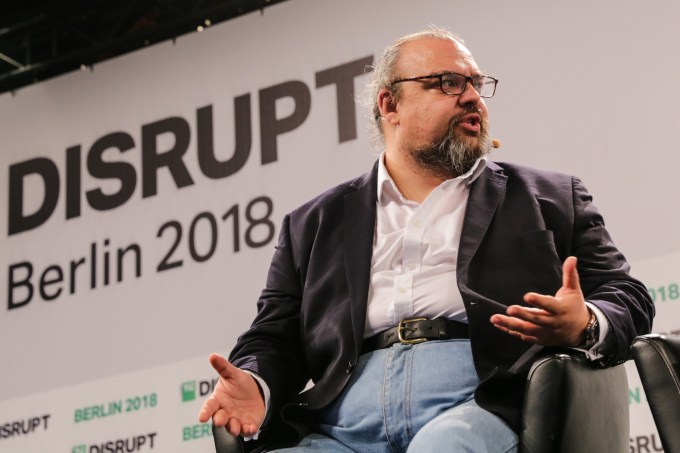
Vinay Gupta was a member of the Ethereum Foundation, which created the Ethereum cryptocurrency and helped popularize the blockchain among developers
“Some of those projects are very successful, some aren’t, but they all should have been properly regulated securities from the beginning, because they were raising money directly to the general public. The governments didn’t go away, the internet doesn’t exist in a separate dimension, there was always going to be a settlement with regulators, and what will come out of that as a correctly regulated token economy next year, the SEC will define these things are not okay.
“The regulated exchanges will come up [and] it’s all going to straighten itself out. But by then it will be much closer to regular finance than the kind of original blockchain wild west,” he said.
Vinay Gupta (Mattereum) on the future of crypto:
"It's all going to straighten itself out, but by then it will be much closer to regular finance than the original blockchain Wild West" #TCDisrupt pic.twitter.com/k7ML3PDRaR
— TechCrunch (@TechCrunch) November 29, 2018
Indeed, security token platforms — which use blockchain to host equity-like tokens for unregulated U.S. securities — are on the up, with some predicting that ‘digital security tokens’ will hit exchanges potentially before the end of this year. And within the legal rules.
If anything, regular venture capital is reborn again within the crypto industry.
“It depends what projects you’re talking about,” Outlier Ventures’ Jamie Burke, the second member of the panel, explained.
“If you’re talking about protocol and infrastructure, the great innovation that we’ve got, I think it’s still going to stay with us is the idea that you can that should be open source, and it can be tokenized. And that gives it very powerful network effects. And so these things absolutely should have tokens.
“The point is who should participate in financing that network and who should participate in economic value creation and at what stage? So I think we’re going to start to see hybrids. Projects will initially raise money through equity (the riskier part) until they get to the point where they need wider adoption and they need this token to incentivize the network and various behavior,” Burke said.
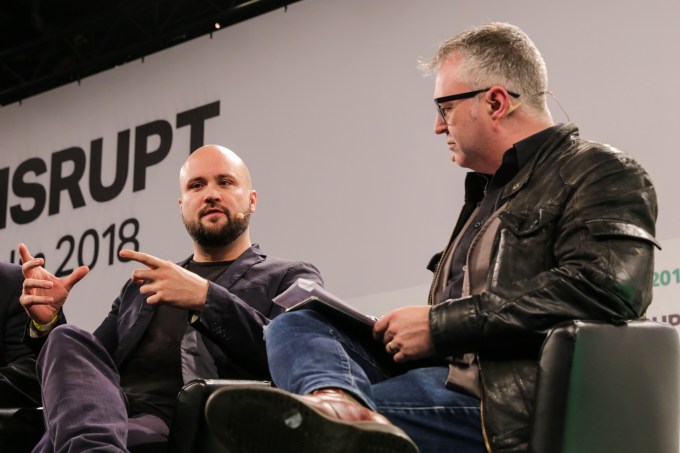
Jamie Burke (left, with Techcrunch’s Mike Butcher) believes that venture capital can live harmoniously with token-based investing
Gupta — who is planning to raise capital equity-based for Mattereum — said that there’s very much still an important role for ‘traditional’ VCs to be a part of company building in the blockchain space.
“Traditional venture money is important because [VCs] put a lot of skill on the table. The kind of scaling challenges that we’re expecting to see over the next year or so are much more like the kind of things that you see on traditional venture because some parts of what we do are very much jurisdiction by jurisdiction. It’s not just you stand up the network and you go,” he said.
Got it! So venture capital is still an important part of the process, despite the past examples of companies raising tens of millions of dollars through token sales.
In fact, Gupta believes that the tokenization of assets — his startup recently ‘tokenized’ a 15th century a Stradivarius violin, worth a cool $9 billion — will enable smaller investors, the type who might have bought into ICOs, to spread their capital more widely without incurring huge amounts of risk.
“The ability to buy a little bit of 10,000s of thousands of assets is the kind of thing that you could only do a very large scale right now. But it gives a kind of stability to your investments that makes ordinary investors more able to get the kind of stability of return that you get with a pension funds,” he explained.
“I think there’s a pretty good chance that this will turn out to be good for retail investors, once the markets have settled down in the irrational exuberance is burned off.”
You can watch the full panel below.
from TechCrunch https://ift.tt/2E58RNp
NSA hacking tools being used to attack thousands of computers
 It’s been over a year since many of NSA’s exploits leaked online and as a result, over hundreds of thousands of computers remain unpatched and vulnerable to date. These exploits were initially used to spread ransomware and cryptocurrency mining attacks but now, it seems hackers are using the leaked tools to create an even larger malicious proxy network, reports TechCrunch. Akamai, the American content delivery network, did some digging around and found that the previously reported UPnProxy vulnerability, which misuses the common Universal Plug and Play network protocol, is now capable of targeting unpatched computers behind the router’s firewall. “While it is unfortunate to see UPnProxy being actively leveraged to attack systems previously shielded behind the NAT, it was bound to happen eventually,” commented Akamai’s Chad Seaman, the author of the report. The new injection attacks use two exploits: EternalBlue (for Windows computers) and EternalRed (for Linux machines), which are backdoors created by the NSA to target computers. While UPnProxy modified the port mapping on a router that was vulnerable, the two Eternal exploits target the service ports used by SMB, which is a common networking protocol used on most computers. Akamai calls the two exploits EternalSilence collectively. “The goal here isn’t a targeted attack,” added Seaman. “It’s an attempt at leveraging tried and true off the shelf exploits, casting a wide net into a relatively small pond, in the hopes of scooping up a pool of previously inaccessible devices.” The problem is Eternal-based attacks are hard to detect. So it becomes difficult for administrators to even know if they’re attacked. Though fixes for the Eternal-based attacks have been around for a over a year, many computers remain unpatched and therefore, vulnerable. According to Seaman, flashing an affected network router and immediately disabling UPnProxy could solve the issue but completely replacing the router is always better.
It’s been over a year since many of NSA’s exploits leaked online and as a result, over hundreds of thousands of computers remain unpatched and vulnerable to date. These exploits were initially used to spread ransomware and cryptocurrency mining attacks but now, it seems hackers are using the leaked tools to create an even larger malicious proxy network, reports TechCrunch. Akamai, the American content delivery network, did some digging around and found that the previously reported UPnProxy vulnerability, which misuses the common Universal Plug and Play network protocol, is now capable of targeting unpatched computers behind the router’s firewall. “While it is unfortunate to see UPnProxy being actively leveraged to attack systems previously shielded behind the NAT, it was bound to happen eventually,” commented Akamai’s Chad Seaman, the author of the report. The new injection attacks use two exploits: EternalBlue (for Windows computers) and EternalRed (for Linux machines), which are backdoors created by the NSA to target computers. While UPnProxy modified the port mapping on a router that was vulnerable, the two Eternal exploits target the service ports used by SMB, which is a common networking protocol used on most computers. Akamai calls the two exploits EternalSilence collectively. “The goal here isn’t a targeted attack,” added Seaman. “It’s an attempt at leveraging tried and true off the shelf exploits, casting a wide net into a relatively small pond, in the hopes of scooping up a pool of previously inaccessible devices.” The problem is Eternal-based attacks are hard to detect. So it becomes difficult for administrators to even know if they’re attacked. Though fixes for the Eternal-based attacks have been around for a over a year, many computers remain unpatched and therefore, vulnerable. According to Seaman, flashing an affected network router and immediately disabling UPnProxy could solve the issue but completely replacing the router is always better.from Latest Technology News https://ift.tt/2zuL7hB
PUBG Mobile surpasses Fortnite with 166 revenue growth during Black Friday week
 In a first, PUBG Mobile saw a revenue boost of 166 percent and surpassed the revenue of Fortnite on iOS during Black Friday week, keyword-based App Ranking tool SensorTower has revealed. According to SensorTower‘s Store Intelligence data, although PUBG Mobile grossed only 20 percent less than Fortnite on iOS during the week, it was able to surpass it in earnings on two of the seven days, November 21 and November 22. SensorTower says that the estimated worldwide player spending across both the App Store and Google Play was up 2.7x last week in comparison to the week before that. This represented 166 percent boost from just $4.5 million to an estimated $12 million for the mobile version of PUBG. “This was 43 percent more than rival Fortnite grossed on iOS devices during the same period, marking the first week since PUBG Mobile began monetising in April that its player spending eclipsed that of the Epic Games developed title,” SensorTower noted. If we further break down the revenue, PUBG Mobile was averaging an estimated $1.7 million each day in revenue, while Fortnite was earning around $1.2 million per day on iOS devices by the end of the week. Interestingly, this trend shocked some of them because reportedly there weren’t any driving forces behind the sudden boost in revenue. Both games are free to download and only supported by microtransactions. PUBG has been installed over 100 million downloads from Google Play Store and is the number 3 strategy game on App Store. Currently, the PUBG Mobile Star Challenge global finale is underway at the Festival Arena in Dubai. The total prize pool on offer is $600,000 which approximately Rs 4.25 crore. The winners of the regional finale will get $20,000, while the two runners-up get $15,000 and $10,000 respectively. Winners will also get a contract to become an official streamers. Tickets for the event can be purchased for AED 35 (approximately Rs 700). If you are a noob when it comes to playing PUBG and want to unlock the antidote to that sulky feeling, you can check out our beginners guide here. If you wish to become better at playing PUBG Mobile and need information on the most lethal weapons/guns in the game, you can check our story here.
In a first, PUBG Mobile saw a revenue boost of 166 percent and surpassed the revenue of Fortnite on iOS during Black Friday week, keyword-based App Ranking tool SensorTower has revealed. According to SensorTower‘s Store Intelligence data, although PUBG Mobile grossed only 20 percent less than Fortnite on iOS during the week, it was able to surpass it in earnings on two of the seven days, November 21 and November 22. SensorTower says that the estimated worldwide player spending across both the App Store and Google Play was up 2.7x last week in comparison to the week before that. This represented 166 percent boost from just $4.5 million to an estimated $12 million for the mobile version of PUBG. “This was 43 percent more than rival Fortnite grossed on iOS devices during the same period, marking the first week since PUBG Mobile began monetising in April that its player spending eclipsed that of the Epic Games developed title,” SensorTower noted. If we further break down the revenue, PUBG Mobile was averaging an estimated $1.7 million each day in revenue, while Fortnite was earning around $1.2 million per day on iOS devices by the end of the week. Interestingly, this trend shocked some of them because reportedly there weren’t any driving forces behind the sudden boost in revenue. Both games are free to download and only supported by microtransactions. PUBG has been installed over 100 million downloads from Google Play Store and is the number 3 strategy game on App Store. Currently, the PUBG Mobile Star Challenge global finale is underway at the Festival Arena in Dubai. The total prize pool on offer is $600,000 which approximately Rs 4.25 crore. The winners of the regional finale will get $20,000, while the two runners-up get $15,000 and $10,000 respectively. Winners will also get a contract to become an official streamers. Tickets for the event can be purchased for AED 35 (approximately Rs 700). If you are a noob when it comes to playing PUBG and want to unlock the antidote to that sulky feeling, you can check out our beginners guide here. If you wish to become better at playing PUBG Mobile and need information on the most lethal weapons/guns in the game, you can check our story here.from Latest Technology News https://ift.tt/2P8iJac
MediaTek Helio P90 teased with groundbreaking AI
 The Realme U1 (review) became the first smartphone to be powered by the MediaTek Helio P70 and the Taiwanese chipset-designer is already teasing another premium mid-range chipset — The Helio P90. While the P70 is still expected to power more devices and an unreleased MediaTek Helio P80 is topping AI benchmark charts, the Helio P90 will reportedly be “powerful, efficient and have groundbreaking AI”. MediaTek posted a teaser video on Twitter claiming higher speed, efficiency and “groundbreaking AI”, but revealed nothing more. The AI part of the claims could be believable considering the Helio P80 recently topped a dedicated AI benchmark. It came second to Qualcomm’s upcoming Snapdragon 8150. MediaTek’s dream of having a flagship high-end chipset ended with the poor performance of the Helio X30 chipset, and since then the company has majorly focused on improving the mid-rangee segment. The Helio P60 has powered devices in India ranging from the sub-10,000 segment to ones priced above Rs 20,000. The Helio P70 is the successor to the popular chipset and is built on a 12nm FinFET manufacturing process promising higher efficiency. It also features a multi-core APU to better handle AI tasks. The Helio P80 has not been officially announced but rumours about the chipset reveal it will be built on the same 12nm manufacturing process by TSMC but with a new architecture with further improvements in AI. In the AI benchmark, the Helio P80 outperformed the newly announced Kirin 980 by Huawei that is built on a 7nm process. The Helio P80 is expected to debut in the Oppo R19 next year. According to a report by Taiwan Business Times, MediaTek has worked hard on the new chipset to be considered for the Oppo flagship. To note, the Oppo R15 marked the debut of the Helio P60 in the first half of 2017, but the Oppo R17 switched to a Qualcomm chipset. Taiwanese supply chain sources have revealed that the MediaTek Helio P80 will be the company’s flagship product for the first half of 2019 and will have an ARM-based octa-core CPU architecture. It seems strange for MediaTek to tease the successor to an unreleased chipset, but we suppose it could have something to do with Qualcomm announcing it’s new flagship chipset on December 4.
The Realme U1 (review) became the first smartphone to be powered by the MediaTek Helio P70 and the Taiwanese chipset-designer is already teasing another premium mid-range chipset — The Helio P90. While the P70 is still expected to power more devices and an unreleased MediaTek Helio P80 is topping AI benchmark charts, the Helio P90 will reportedly be “powerful, efficient and have groundbreaking AI”. MediaTek posted a teaser video on Twitter claiming higher speed, efficiency and “groundbreaking AI”, but revealed nothing more. The AI part of the claims could be believable considering the Helio P80 recently topped a dedicated AI benchmark. It came second to Qualcomm’s upcoming Snapdragon 8150. MediaTek’s dream of having a flagship high-end chipset ended with the poor performance of the Helio X30 chipset, and since then the company has majorly focused on improving the mid-rangee segment. The Helio P60 has powered devices in India ranging from the sub-10,000 segment to ones priced above Rs 20,000. The Helio P70 is the successor to the popular chipset and is built on a 12nm FinFET manufacturing process promising higher efficiency. It also features a multi-core APU to better handle AI tasks. The Helio P80 has not been officially announced but rumours about the chipset reveal it will be built on the same 12nm manufacturing process by TSMC but with a new architecture with further improvements in AI. In the AI benchmark, the Helio P80 outperformed the newly announced Kirin 980 by Huawei that is built on a 7nm process. The Helio P80 is expected to debut in the Oppo R19 next year. According to a report by Taiwan Business Times, MediaTek has worked hard on the new chipset to be considered for the Oppo flagship. To note, the Oppo R15 marked the debut of the Helio P60 in the first half of 2017, but the Oppo R17 switched to a Qualcomm chipset. Taiwanese supply chain sources have revealed that the MediaTek Helio P80 will be the company’s flagship product for the first half of 2019 and will have an ARM-based octa-core CPU architecture. It seems strange for MediaTek to tease the successor to an unreleased chipset, but we suppose it could have something to do with Qualcomm announcing it’s new flagship chipset on December 4.from Latest Technology News https://ift.tt/2zxTusR
Oppo could showcase a foldable phone at Mobile World Congress next year
 Smartphone trends are changing and the next big innovation leap in this space seems to be foldable phones. While Samsung had been teasing its foldable smartphone for a couple of years, the company finally gave us a glimpse of it at its Developers Conference this year. Now, Oppo seems to have snuck up close behind Samsung and has announced that it is developing its own foldable smartphone. Oppo's Product Manager, Chuck Wang, has announced that the smartphone manufacturer will dole out more information about its foldable device next year in February. This is the time when the Mobile World Congress takes place in Barcelona, so one can expect to hear from Oppo at the event. With this development, Oppo has become one of the several smartphone makers that are vying to get a chunk of the foldable smartphone market. This is not surprising since the company has been granted some patents for a foldable phone. Unfortunately, there is no additional information about Oppo’s upcoming smartphone like its release date or specifications. Currently, alongside Samsung and Oppo, LG and Huawei have also confirmed a foldable device. As mentioned earlier, Samsung’s foldable smartphone was showcased at the Samsung Developers Conference (SDC) in San Francisco. The company’s Senior Vice President of Mobile Product Marketing, Justin Denison, showcased the phone under dimmed lights with a black cover camouflage to obfuscate its design. Samsung did say that the phone uses an Infinity Flex Display that measures 7.3 inches with a 1536 x 2152p resolution. When unfolded, the phone has a display aspect ratio of 4.2 and it folds in half to reveal a second display called “cover display.” On the front, it functions as a 4.58-inch phone with a resolution of 840 x 1960 pixels with an aspect ratio of 21:9. Samsung says that the phone can be folded up to fit into a pocket. Although the smartphone manufacturer did not announce how much the smartphone will cost, reports suggest that it could be priced at $1770 (approx Rs 1.25 lakh). Additionally, a tipster also tweeted that the smartphone might be priced at a minimum of $1925 (approx Rs 1.36 lakh) or a maximum of $2,565 (approx Rs 1.81 lakh). If this turns out to be true, the upcoming foldable smartphones could soon shatter the 1 lakh price point set by the current flagships like the iPhone XS and the iPhone XS Max. In October, the CEO of LG Mobile, Hwang Jeong-hwan confirmed that the company is working on a foldable phone. LG also recently applied for three new trademarks, Flex, Foldi and Duplex, with the EUIPO (European Union Intellectual Property Office). These names are speculated to be used on the company’s upcoming foldable phones. The Flexi and Foldi trademarks could be used for phones with flexible and foldable displays respectively, while Duplex might be reserved for an LG phone with two flexible screens. Additionally, a day after applying for the three aforementioned trademarks, LG is said to have applied for five more smartphone model names; LG Bendi, Solid, Solidis, XB and XF. Source
Smartphone trends are changing and the next big innovation leap in this space seems to be foldable phones. While Samsung had been teasing its foldable smartphone for a couple of years, the company finally gave us a glimpse of it at its Developers Conference this year. Now, Oppo seems to have snuck up close behind Samsung and has announced that it is developing its own foldable smartphone. Oppo's Product Manager, Chuck Wang, has announced that the smartphone manufacturer will dole out more information about its foldable device next year in February. This is the time when the Mobile World Congress takes place in Barcelona, so one can expect to hear from Oppo at the event. With this development, Oppo has become one of the several smartphone makers that are vying to get a chunk of the foldable smartphone market. This is not surprising since the company has been granted some patents for a foldable phone. Unfortunately, there is no additional information about Oppo’s upcoming smartphone like its release date or specifications. Currently, alongside Samsung and Oppo, LG and Huawei have also confirmed a foldable device. As mentioned earlier, Samsung’s foldable smartphone was showcased at the Samsung Developers Conference (SDC) in San Francisco. The company’s Senior Vice President of Mobile Product Marketing, Justin Denison, showcased the phone under dimmed lights with a black cover camouflage to obfuscate its design. Samsung did say that the phone uses an Infinity Flex Display that measures 7.3 inches with a 1536 x 2152p resolution. When unfolded, the phone has a display aspect ratio of 4.2 and it folds in half to reveal a second display called “cover display.” On the front, it functions as a 4.58-inch phone with a resolution of 840 x 1960 pixels with an aspect ratio of 21:9. Samsung says that the phone can be folded up to fit into a pocket. Although the smartphone manufacturer did not announce how much the smartphone will cost, reports suggest that it could be priced at $1770 (approx Rs 1.25 lakh). Additionally, a tipster also tweeted that the smartphone might be priced at a minimum of $1925 (approx Rs 1.36 lakh) or a maximum of $2,565 (approx Rs 1.81 lakh). If this turns out to be true, the upcoming foldable smartphones could soon shatter the 1 lakh price point set by the current flagships like the iPhone XS and the iPhone XS Max. In October, the CEO of LG Mobile, Hwang Jeong-hwan confirmed that the company is working on a foldable phone. LG also recently applied for three new trademarks, Flex, Foldi and Duplex, with the EUIPO (European Union Intellectual Property Office). These names are speculated to be used on the company’s upcoming foldable phones. The Flexi and Foldi trademarks could be used for phones with flexible and foldable displays respectively, while Duplex might be reserved for an LG phone with two flexible screens. Additionally, a day after applying for the three aforementioned trademarks, LG is said to have applied for five more smartphone model names; LG Bendi, Solid, Solidis, XB and XF. Sourcefrom Latest Technology News https://ift.tt/2zrSwOX
Netflix cancels Daredevil as Disney+ nears launch
 Netflix has pulled the plug on its best Marvel show – Daredevil. The Devil of Hells Kitchen will no longer return to fight crime on the streaming service. “We are tremendously proud of the show’s last and final season and although it’s painful for the fans, we feel it best to close this chapter on a high note. We’re thankful to showrunner Erik Oleson, the show’s writers, stellar crew and incredible cast including Charlie Cox as Daredevil himself, and we’re grateful to the fans who have supported the show over the years”, Netflix said in a statement. Daredevil isn’t the first Marvel show on Netflix to get cancelled. Iron Fist and Luke Cage have also faced the same fate. Although, of all the Marvel shows on Netflix, only Daredevil lived long enough to get a season 3. The only remaining Marvel shows on Netflix are Jessica Jones and The Punisher, although we wouldn’t be surprised if in the coming days these shows are cancelled too. Why you ask? Well, to begin with, Marvel is owned by Disney. Disney is working on launching its own streaming service, Disney+ next year. Once the service launches, Disney would want all Marvel characters to be under their own umbrella. This doesn’t mean that the alreadly released Netflix shows will leave the platform or that Disney+ will take over the baton of the same shows from Netflix. All Netflix-Marvel shows will continue to live long on the platforms for anyone that wants to revisit them. Disney+ is set to launch in 2019 and there is no information about an India launch for the service. However, rumour has it that the streaming service will start expanding internationally in 2020. If you think the content on Disney’s streaming service will be kids friendly only, we say think again. Disney own quite a few studios such as Walt Disney Pictures (obviously), Pixar, Lucas Films (which means Star Wars), Marvel Studios (duh!), Disney Music Group, ABC group, ESPN and many many more. Disney is working on a limited series which will see a teamup of Falcon and the Winter Soldier. Other limited series in the offing for the upcoming streaming platform include one starring Tom Hiddleston as MCU hero and Thor’s brother Loki, and another starring Elizabeth Olsen as Scarlet Witch from Marvel’s Avengers universe. Viewers can also look forward to watching their old Disney favourites such as Mickey Mouse, Beauty and the Beast, Snow White, and more on the streaming platform. Coming back to the show at hand, Daredevil, it had quite the dramatic and entertaining season 3 with intense action sequences, a gripping story and the introduction of a worthy antagonist in the form of Bullseye. We of course saw the return of King Pin in the avatar we’ve been wanting to see him in the show. If there is one thing, we have learnt from the Netflix show Daredevil is that there is hope for the character to make an impactful silver screen appearance and the disaster that is Ben Affleck can be forgotten. Its funny how Ben Affleck has managed to ruin two superheroes – Daredevil and Batman. Speaking of upcoming superhero adventures, Aquaman is out in the coming weeks and the first Marvel movie to hit theatres in 2019 is Captain Marvel.
Netflix has pulled the plug on its best Marvel show – Daredevil. The Devil of Hells Kitchen will no longer return to fight crime on the streaming service. “We are tremendously proud of the show’s last and final season and although it’s painful for the fans, we feel it best to close this chapter on a high note. We’re thankful to showrunner Erik Oleson, the show’s writers, stellar crew and incredible cast including Charlie Cox as Daredevil himself, and we’re grateful to the fans who have supported the show over the years”, Netflix said in a statement. Daredevil isn’t the first Marvel show on Netflix to get cancelled. Iron Fist and Luke Cage have also faced the same fate. Although, of all the Marvel shows on Netflix, only Daredevil lived long enough to get a season 3. The only remaining Marvel shows on Netflix are Jessica Jones and The Punisher, although we wouldn’t be surprised if in the coming days these shows are cancelled too. Why you ask? Well, to begin with, Marvel is owned by Disney. Disney is working on launching its own streaming service, Disney+ next year. Once the service launches, Disney would want all Marvel characters to be under their own umbrella. This doesn’t mean that the alreadly released Netflix shows will leave the platform or that Disney+ will take over the baton of the same shows from Netflix. All Netflix-Marvel shows will continue to live long on the platforms for anyone that wants to revisit them. Disney+ is set to launch in 2019 and there is no information about an India launch for the service. However, rumour has it that the streaming service will start expanding internationally in 2020. If you think the content on Disney’s streaming service will be kids friendly only, we say think again. Disney own quite a few studios such as Walt Disney Pictures (obviously), Pixar, Lucas Films (which means Star Wars), Marvel Studios (duh!), Disney Music Group, ABC group, ESPN and many many more. Disney is working on a limited series which will see a teamup of Falcon and the Winter Soldier. Other limited series in the offing for the upcoming streaming platform include one starring Tom Hiddleston as MCU hero and Thor’s brother Loki, and another starring Elizabeth Olsen as Scarlet Witch from Marvel’s Avengers universe. Viewers can also look forward to watching their old Disney favourites such as Mickey Mouse, Beauty and the Beast, Snow White, and more on the streaming platform. Coming back to the show at hand, Daredevil, it had quite the dramatic and entertaining season 3 with intense action sequences, a gripping story and the introduction of a worthy antagonist in the form of Bullseye. We of course saw the return of King Pin in the avatar we’ve been wanting to see him in the show. If there is one thing, we have learnt from the Netflix show Daredevil is that there is hope for the character to make an impactful silver screen appearance and the disaster that is Ben Affleck can be forgotten. Its funny how Ben Affleck has managed to ruin two superheroes – Daredevil and Batman. Speaking of upcoming superhero adventures, Aquaman is out in the coming weeks and the first Marvel movie to hit theatres in 2019 is Captain Marvel. from Latest Technology News https://ift.tt/2DTSHFx
OnePlus 6T McLaren Edition may have 10GB RAM and 256GB onboard storage
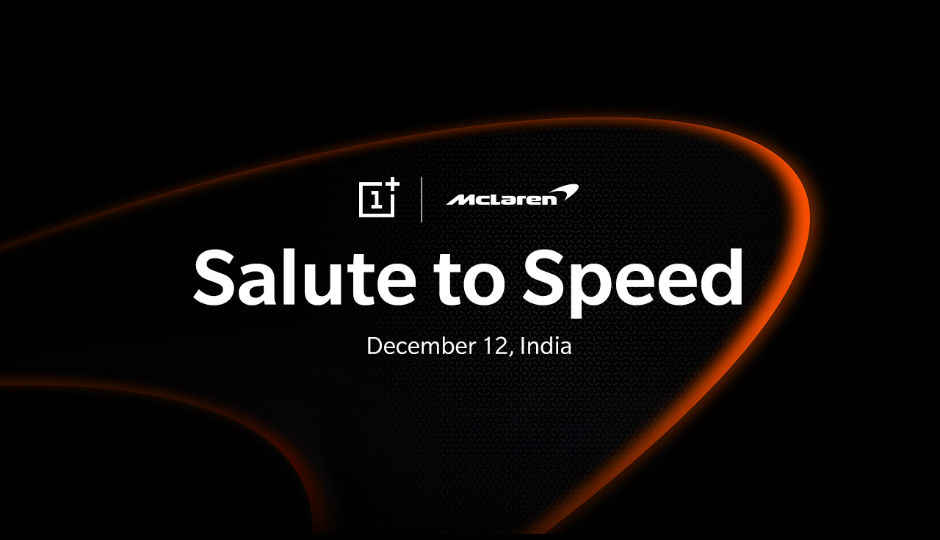 Just two days after the company announced that it has partnered with the Britain-based automaker McLaren to possibly launch the OnePlus 6T McLaren Edition smartphone, a report has claimed that the device in question will have 10GB RAM and 256GB onboard storage. According to mysmartprice, the device is expected to first launch in Woking, London on December 11, followed by a launch in Mumbai, India on December 12. With this expected launch, OnePlus will also join the fray of smartphone that have automobile brands special edition of devices. Recently, Huawei announced a Huawei Mate 20 Porsche Edition smartphone and Oppo released the Lamborghini Edition of its Find X smartphone. The collaboration has a new term “In a salute to speed” that falls in line with company’s new tagline, “Unlock the Speed”. The partnership incorporates both McLaren Automotive and McLaren Racing -- one of the most successful teams in Formula 1. OnePlus has been creatively collaborating with franchise since it launched the OnePlus 3T two years ago. The company teamed up with Parisian retailer Colette to produce the OnePlus 3T Colette 20th Anniversary Edition. Later, OnePlus worked with Jean-Charles de Castelbajac to launch the OnePlus 5 JCC+Limited Edition “Callection”. For the OnePlus 5T, the Chinese tech company launched the OnePlus 5T Star Wars Limited Edition. The most recent collaboration was in April this year, when it announced a partnership with Marvel Studios to launch the OnePlus 6 Marvel Avengers Limited Edition smartphone.
Just two days after the company announced that it has partnered with the Britain-based automaker McLaren to possibly launch the OnePlus 6T McLaren Edition smartphone, a report has claimed that the device in question will have 10GB RAM and 256GB onboard storage. According to mysmartprice, the device is expected to first launch in Woking, London on December 11, followed by a launch in Mumbai, India on December 12. With this expected launch, OnePlus will also join the fray of smartphone that have automobile brands special edition of devices. Recently, Huawei announced a Huawei Mate 20 Porsche Edition smartphone and Oppo released the Lamborghini Edition of its Find X smartphone. The collaboration has a new term “In a salute to speed” that falls in line with company’s new tagline, “Unlock the Speed”. The partnership incorporates both McLaren Automotive and McLaren Racing -- one of the most successful teams in Formula 1. OnePlus has been creatively collaborating with franchise since it launched the OnePlus 3T two years ago. The company teamed up with Parisian retailer Colette to produce the OnePlus 3T Colette 20th Anniversary Edition. Later, OnePlus worked with Jean-Charles de Castelbajac to launch the OnePlus 5 JCC+Limited Edition “Callection”. For the OnePlus 5T, the Chinese tech company launched the OnePlus 5T Star Wars Limited Edition. The most recent collaboration was in April this year, when it announced a partnership with Marvel Studios to launch the OnePlus 6 Marvel Avengers Limited Edition smartphone.from Latest Technology News https://ift.tt/2rdKQve
Specs comparison: RealMe U1 vs Honor 8C
 The RealMe has finally launched its first phone in the U series, which is also the world’s first smartphone to feature a MediaTek Helio P70 chipset “RealMe U1”. The smartphone is priced at Rs 11,999 in India for its 3GB/32Gb variant. On the other side, we have the Honor 8C, which comes with a Qualcomm Snapdragon 632 processor and also priced at Rs 11,999. So let’s do a quick specs comparison to see which one would be the right pick for you? The RealMe U1 comes with a 6.3-inch display that offers a resolution of 1080 x 2340 pixels, while the Honor 8C sports a slightly smaller 6.2-inch display that offers a resolution of 720 x 1520 pixels. In terms of display, the RealMe U1 has a bigger and better display than the Honor 8C as it looks like on paper. When it comes to the processor, the RealMe U1 is powered by a MediaTek Helio P70 processor, while the Honor 8C is backed by a Qualcomm Snapdragon 632 processor. As far as the cameras are concerned, the RealMe U1 has a 25MP front camera with a dual 13MP + 2MP rear camera. The Honor 8C is equipped with an 8MP unit on the front with a dual 13MP + 2MP camera setup at the back. Both RealMe U1 and Honor 8C are available in India at Rs 11,999. The Honor 8C will be available on Amazon from December 10, while you will be able to buy the RealMe U1 on December 5 from Amazon.
The RealMe has finally launched its first phone in the U series, which is also the world’s first smartphone to feature a MediaTek Helio P70 chipset “RealMe U1”. The smartphone is priced at Rs 11,999 in India for its 3GB/32Gb variant. On the other side, we have the Honor 8C, which comes with a Qualcomm Snapdragon 632 processor and also priced at Rs 11,999. So let’s do a quick specs comparison to see which one would be the right pick for you? The RealMe U1 comes with a 6.3-inch display that offers a resolution of 1080 x 2340 pixels, while the Honor 8C sports a slightly smaller 6.2-inch display that offers a resolution of 720 x 1520 pixels. In terms of display, the RealMe U1 has a bigger and better display than the Honor 8C as it looks like on paper. When it comes to the processor, the RealMe U1 is powered by a MediaTek Helio P70 processor, while the Honor 8C is backed by a Qualcomm Snapdragon 632 processor. As far as the cameras are concerned, the RealMe U1 has a 25MP front camera with a dual 13MP + 2MP rear camera. The Honor 8C is equipped with an 8MP unit on the front with a dual 13MP + 2MP camera setup at the back. Both RealMe U1 and Honor 8C are available in India at Rs 11,999. The Honor 8C will be available on Amazon from December 10, while you will be able to buy the RealMe U1 on December 5 from Amazon.from Latest Technology News https://ift.tt/2E46R7Y
Samsung Galaxy M10 with Exynos 7870 spotted on Geekbench
 Earlier this month, a report claimed that Samsung could merge its Galaxy J, Galaxy On and Galaxy C series and introduce a new Galaxy M series that will comprise of smartphones in the mid and entry-level segments in the country. While this is not confirmed to be true, a Galaxy M series smartphone, allegedly called the Galaxy M10, has been spotted on Geekbench. According to the listing, the smartphone bears the model number SM-M105F and is powered by Exynos 7870 processor clocked at 1.59GHz. This Samsung device is said to be an entry-level phone and recorded a modest score of 724 in single core test and 3637 in multi-core test. Furthermore, the SM-M105F runs on Android 8.1 Oreo and is backed with 3GB RAM. Mysmartprice reports that the Galaxy M model will come in 16GB and 32GB variants and it could be a replacement of the Galaxy J5 and Galaxy J7. It is reported that this smartphone will also have a dual-SIM functionality and will be offered in Blue and Dark Gray colours. Two other smartphones with model number M-M205F and SM-M305F are said to be under development and could be released under the new series with the name Galaxy M20 and M30 respectively. Additionally, the SM-M205F could be launched in 32GB and 64GB storage variants, while the SM-M305F may be offered in 64GB and 128GB internal storage variants. This seems to be the company’s first step towards merging three lineups into one and offer mainly three series. The M-series smartphones will cater to the affordable segment, the A-series will cater to the Rs 30,000-Rs 40,000 market, and the S-series and Note devices will be their flagship smartphones. The company is aiming to equip its A series of smartphones with an LCD display so that they cost under 300,000 Won (Approx Rs 19,276). These phones are said to be tailored specifically for India and other South Asian countries, and the first of these devices to hit the market are said to be the Galaxy A50 and Galaxy A60. Samsung could also launch the Galaxy A30, Galaxy A40, Galaxy A70 and the Galaxy A80 smartphone, but they will reportedly come with AMOLED displays.
Earlier this month, a report claimed that Samsung could merge its Galaxy J, Galaxy On and Galaxy C series and introduce a new Galaxy M series that will comprise of smartphones in the mid and entry-level segments in the country. While this is not confirmed to be true, a Galaxy M series smartphone, allegedly called the Galaxy M10, has been spotted on Geekbench. According to the listing, the smartphone bears the model number SM-M105F and is powered by Exynos 7870 processor clocked at 1.59GHz. This Samsung device is said to be an entry-level phone and recorded a modest score of 724 in single core test and 3637 in multi-core test. Furthermore, the SM-M105F runs on Android 8.1 Oreo and is backed with 3GB RAM. Mysmartprice reports that the Galaxy M model will come in 16GB and 32GB variants and it could be a replacement of the Galaxy J5 and Galaxy J7. It is reported that this smartphone will also have a dual-SIM functionality and will be offered in Blue and Dark Gray colours. Two other smartphones with model number M-M205F and SM-M305F are said to be under development and could be released under the new series with the name Galaxy M20 and M30 respectively. Additionally, the SM-M205F could be launched in 32GB and 64GB storage variants, while the SM-M305F may be offered in 64GB and 128GB internal storage variants. This seems to be the company’s first step towards merging three lineups into one and offer mainly three series. The M-series smartphones will cater to the affordable segment, the A-series will cater to the Rs 30,000-Rs 40,000 market, and the S-series and Note devices will be their flagship smartphones. The company is aiming to equip its A series of smartphones with an LCD display so that they cost under 300,000 Won (Approx Rs 19,276). These phones are said to be tailored specifically for India and other South Asian countries, and the first of these devices to hit the market are said to be the Galaxy A50 and Galaxy A60. Samsung could also launch the Galaxy A30, Galaxy A40, Galaxy A70 and the Galaxy A80 smartphone, but they will reportedly come with AMOLED displays.from Latest Technology News https://ift.tt/2P3VgqJ
Specs comparison: Honor 8C vs Honor Play
 The Honor 8C with dual rear cameras and Snapdragon 632 processor to launch in India on November 29. The smartphone is expected to be the latest mid-range device from the company. On the other hand, we have the Honor Play, which was launched by Huawei’s sub-brand Honor back in August at a price of Rs 19,999 for the 4GB variant. Let’s compare the two smartphones too which one looks strong in terms of specifications? Let’s start with comparing the display of the two devices. The Honor 8C sports a 6.2-inch display that offers a resolution of 720 x 1550 pixels. The Honor Play features a slightly bigger 6.3-inch FHD+ display that offers better resolutions than the Honor 8C as you can see in the sheet above. When it comes to the processor, the Honor 8C is powered by a Qualcomm Snapdragon 632 processor, while the Honor Play comes with Huawei’s own Kirin 970 processor. Coming to the cameras, like almost every single device in the market these two devices also have a dual rear camera setup at the back. The Honor 8C sports a dual 13MP + 2MP rear camera with an 8MP unit on the front. On the other hand, the Honor Play comes with a dual 16MP + 2MP rear camera with a 16MP sensor at the front. The Honor 8C has been launched in India with a starting price of Rs 11,999, while you can get the Honor Play for Rs 19,999 in India
The Honor 8C with dual rear cameras and Snapdragon 632 processor to launch in India on November 29. The smartphone is expected to be the latest mid-range device from the company. On the other hand, we have the Honor Play, which was launched by Huawei’s sub-brand Honor back in August at a price of Rs 19,999 for the 4GB variant. Let’s compare the two smartphones too which one looks strong in terms of specifications? Let’s start with comparing the display of the two devices. The Honor 8C sports a 6.2-inch display that offers a resolution of 720 x 1550 pixels. The Honor Play features a slightly bigger 6.3-inch FHD+ display that offers better resolutions than the Honor 8C as you can see in the sheet above. When it comes to the processor, the Honor 8C is powered by a Qualcomm Snapdragon 632 processor, while the Honor Play comes with Huawei’s own Kirin 970 processor. Coming to the cameras, like almost every single device in the market these two devices also have a dual rear camera setup at the back. The Honor 8C sports a dual 13MP + 2MP rear camera with an 8MP unit on the front. On the other hand, the Honor Play comes with a dual 16MP + 2MP rear camera with a 16MP sensor at the front. The Honor 8C has been launched in India with a starting price of Rs 11,999, while you can get the Honor Play for Rs 19,999 in India from Latest Technology News https://ift.tt/2AxmNLV
Xiaomi Redmi 44A now receiving MIUI 10 update based on Android 712 Nougat
 Xiaomi has already outed its phones that will receive the MIUI 10 update and it included some of its older phones as well. Making good on its promise, the company is now seeding the MIUI 10 Global Stable ROM to the Xiaomi Redmi 4 and the Redmi 4A. First spotted by FoneArena, the news comes via the company’s Mi Forums, where the update has been announced for the Redmi 4A. As for the Redmi 4, there is no official post about the update but some of its users have posted screenshots with the new update on the Redmi 4 being available on their devices. The MIUI 10 update for both the Redmi 4 and the Redmi 4A is based on Android 7.1.2 Nougat. This means that even though the two devices get a facelift in terms of UI and colour schemes, there is no update to the underlying OS. Additionally, the security patch level on the Redmi 4A is a bit dated with the July 2018 patch, while the Redmi 4 gets the October 2018 security update. For the Redmi 4, the MIUI 10.1.1.0.NAMMFI update size is 316MB, while for the Redmi 4A update MIUI 10.1.1.0.NCCMIFI is 268MB in size. The Redmi 4 and the Redmi 4A were launched last year in India running on Android 6.0 Marshmallow. They were later updated to MIUI 9 running on Android Nougat and are now finally receiving the MIUI 10 update. However, some users on the Mi Forums have complained that some of the most attractive MIUI 10 features like bokeh mode support on single camera and face unlock is also not available. Hopefully, the company will be rolling out these features to the phones with a future update. Xiaomi Redmi 4/4A users can check if the update is available for their unit by heading over to Settings > About phone > System updates > Check for updates. It might take some time for the update to arrive on devices since it is being rolled over the air (OTA). Via: FoneArena
Xiaomi has already outed its phones that will receive the MIUI 10 update and it included some of its older phones as well. Making good on its promise, the company is now seeding the MIUI 10 Global Stable ROM to the Xiaomi Redmi 4 and the Redmi 4A. First spotted by FoneArena, the news comes via the company’s Mi Forums, where the update has been announced for the Redmi 4A. As for the Redmi 4, there is no official post about the update but some of its users have posted screenshots with the new update on the Redmi 4 being available on their devices. The MIUI 10 update for both the Redmi 4 and the Redmi 4A is based on Android 7.1.2 Nougat. This means that even though the two devices get a facelift in terms of UI and colour schemes, there is no update to the underlying OS. Additionally, the security patch level on the Redmi 4A is a bit dated with the July 2018 patch, while the Redmi 4 gets the October 2018 security update. For the Redmi 4, the MIUI 10.1.1.0.NAMMFI update size is 316MB, while for the Redmi 4A update MIUI 10.1.1.0.NCCMIFI is 268MB in size. The Redmi 4 and the Redmi 4A were launched last year in India running on Android 6.0 Marshmallow. They were later updated to MIUI 9 running on Android Nougat and are now finally receiving the MIUI 10 update. However, some users on the Mi Forums have complained that some of the most attractive MIUI 10 features like bokeh mode support on single camera and face unlock is also not available. Hopefully, the company will be rolling out these features to the phones with a future update. Xiaomi Redmi 4/4A users can check if the update is available for their unit by heading over to Settings > About phone > System updates > Check for updates. It might take some time for the update to arrive on devices since it is being rolled over the air (OTA). Via: FoneArenafrom Latest Technology News https://ift.tt/2TWD1qF
Meizu plans fresh innings in India, may pit smartphones against Xiaomi and OnePlus: Report
 Meizu went silent in India last year and after a sabbatical it is reportedly preparing to bounce back with the launch of three smartphones in different segments in the country. If the report making rounds on the internet is to be believed, the company will unveil these smartphone as early as next month and pit them against OnePlus and Xiaomi. Not only these devices, the report says that Meizu is also planning to launch two devices at an event sometime in January next year. Citing industry sources, BGR India reports that one of these three smartphones with the codename ‘M16-TH’ will launch taking on the current ‘flagship killer’ and Indian premium segment market leader (Counterpoint Research) the OnePlus 6T. The other two smartphones are said to be affordable devices that are expected to rival Xiaomi’s Redmi series of smartphones. The launch will further congest the smartphone market which is already crowded with multiple Chinese smartphone makers. Like other Chinese players including Gionee and LeEco, Meizu also succumbed to the increasing competition and possible lack of fund injection. In February, 2015, Alibaba invested $590 million in Meizu, acquiring an undisclosed minority stake, and that same year, the company crossed borders to launch their first phone, Meizu M1 Note in India. Since the, we haven't heard from Meizu and with the three new smartphones, the company could now be looking to cover lost ground in the country. With a whopping 65 percent market share, Xiaomi is currently the most preferred brand for users in the Rs 10,000 to Rs 15,000 price segment, owing to value-for-money and brand awareness. Samsung is the second most loved brand in this category with 43 percent market share, followed by Vivo and Oppo with 29 percent market share. When it comes to the Rs 25,000 - Rs 40,000 segment, OnePlus leads with 55 percent, followed by Xiaomi at 47 percent, Apple with 45 percent and Samsung at 39 percent.
Meizu went silent in India last year and after a sabbatical it is reportedly preparing to bounce back with the launch of three smartphones in different segments in the country. If the report making rounds on the internet is to be believed, the company will unveil these smartphone as early as next month and pit them against OnePlus and Xiaomi. Not only these devices, the report says that Meizu is also planning to launch two devices at an event sometime in January next year. Citing industry sources, BGR India reports that one of these three smartphones with the codename ‘M16-TH’ will launch taking on the current ‘flagship killer’ and Indian premium segment market leader (Counterpoint Research) the OnePlus 6T. The other two smartphones are said to be affordable devices that are expected to rival Xiaomi’s Redmi series of smartphones. The launch will further congest the smartphone market which is already crowded with multiple Chinese smartphone makers. Like other Chinese players including Gionee and LeEco, Meizu also succumbed to the increasing competition and possible lack of fund injection. In February, 2015, Alibaba invested $590 million in Meizu, acquiring an undisclosed minority stake, and that same year, the company crossed borders to launch their first phone, Meizu M1 Note in India. Since the, we haven't heard from Meizu and with the three new smartphones, the company could now be looking to cover lost ground in the country. With a whopping 65 percent market share, Xiaomi is currently the most preferred brand for users in the Rs 10,000 to Rs 15,000 price segment, owing to value-for-money and brand awareness. Samsung is the second most loved brand in this category with 43 percent market share, followed by Vivo and Oppo with 29 percent market share. When it comes to the Rs 25,000 - Rs 40,000 segment, OnePlus leads with 55 percent, followed by Xiaomi at 47 percent, Apple with 45 percent and Samsung at 39 percent.from Latest Technology News https://ift.tt/2DQMnPc
Game Awards 2018 expected to have more than 10 reveals, including Rocksteady Studios rumoured Superman Game
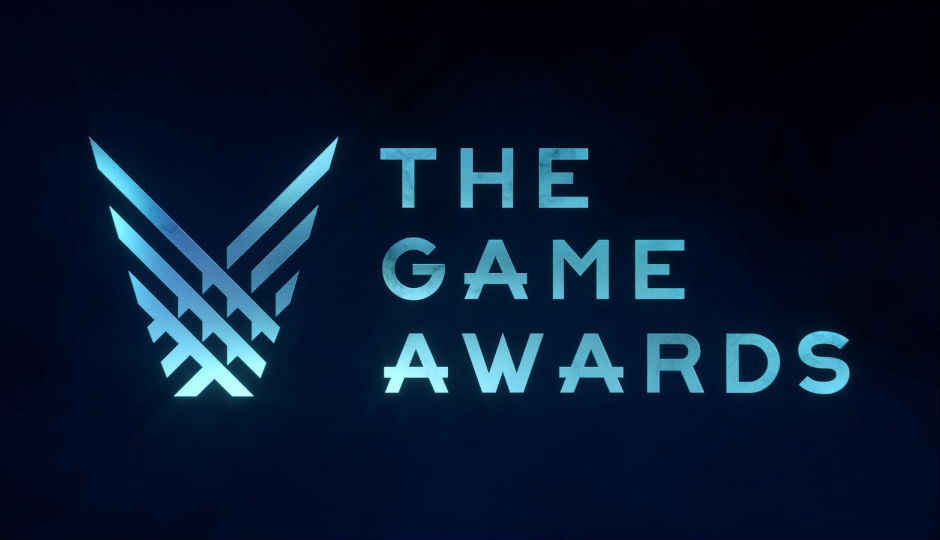 The annual Game Awards will take place on December 6, 2018 and will be broadcast live on YouTube, Twitch and Mixer. The event will take place at 5:30 pm PST on December 6, which translates to December 7, 7 am India time. If you have a 4K TV, you can enjoy the game awards in 4K on YouTube. One of the biggest highlights of the Game Awards each year are the game announcements that take place. Sometimes we see new trailers or footage for upcoming games and at other times, games are announced for the first time during the show. In the past we have seen announcements for titles Like Metal Gear Solid V: The Phantom Pain at the game awards, so we can expect some AAA announcements this year as well. If information circulating the internet is to be believed, then we can expect more than 10 announcements at this years show. Some information points to the reveal of the much-rumoured Superman game by Rocksteady Studios. For those that aren’t aware, Rocksteady is the studio that broke the curse of bad superhero games and gave us the Batman Arkham franchise. The studio is said to be working on a Superman game. Another studio expected to make an announcement at the Game Awards is Obsidian Entertainment. For those that aren’t aware, Obsidian is the studio behind games like Star Wars Knights of the Old Republic II: The Sith Lords, Fallout: New Vegas and South Park: The Stick of Truth to name a few. Since the host of the show, Geoff Keighley and Hideo Kojima are close, we expect Death Stranding to be a part of the event. Information circulating the internet suggests that the game is in its polishing stage and one can hope that a release date for the game could be revealed. That is wishful thinking as Sony would like to reserve the release date announcement for their own event. Nonetheless, we can hope for a new trailer of the game to make an appearance. With less than a week to go for the awards, host Geoff Keighley tweeted, “We have such an incredible show coming together for next week. More than 10 new games will be announced for the first time during #TheGameAwards plus updates on existing titles too. We will share some teases in the days to come....” If you are one that is interested in the awards and the nominations, below is the complete list of award categories and the nominations. GAME OF THE YEAR Assassin’s Creed Odyssey (Ubisoft Quebec / Ubisoft) Celeste (Matt Makes Games) God of War (Sony Santa Monica / SIE) Marvel’s Spider-Man (Insomniac Games / SIE) Monster Hunter: World (Capcom) Red Dead Redemption 2 (Rockstar Games) BEST ONGOING GAME Destiny 2 (Bungie / Activision) Fortnite (Epic Games) No Man’s Sky (Hello Games) Overwatch (Blizzard) Tom Clancy’s Rainbow Six Siege (Ubisoft Montreal / Ubisoft) BEST GAME DIRECTION A Way Out (Hazelight Studios / EA) Detroit: Become Human (Quantic Dream / SIE) God of War (Sony Santa Monica / SIE) Marvel’s Spider-Man (Insomniac Games / SIE) Red Dead Redemption 2 (Rockstar Games) BEST NARRATIVE Detroit: Become Human (Quantic Dream / SIE) God of War (Sony Santa Monica / SIE) Life is Strange 2: Episode 1 (Dontnod Entertainment / Square Enix) Marvel’s Spider-Man (Insomniac Games / SIE) Red Dead Redemption 2 (Rockstar Games) BEST ART DIRECTION Assassin’s Creed Odyssey (Ubisoft Quebec / Ubisoft) God of War (Sony Santa Monica / SIE) Octopath Traveler (Square Enix / Acquire / Nintendo) Red Dead Redemption 2 (Rockstar Games) Return of Obra Din (3909 LLC) BEST SCORE/MUSIC Celeste (Lena Raine) God of War (Bear McCreary) Marvel’s Spider-Man (John Paesano) Ni No Kuni 2: Revenant Kingdom (Joe Hisaishi) Octopath Traveler (Yasunori Nishiki) Red Dead Redemption 2 (Woody Jackson) BEST AUDIO DESIGN Call of Duty: Black Ops 4 (Treyarch Studios / Activision) Forza Horizon 4 (Playground Games / Turn 10 Studios / Microsoft Studios) God of War (Sony Santa Monica / SIE) Marvel’s Spider-Man (Insomniac Games / SIE) Red Dead Redemption 2 (Rockstar Games) BEST PERFORMANCE Bryan Dechart as Connor, Detroit: Become Human Christopher Judge as Kratos, God of War Melissanthi Mahut as Kassandra, Assassin’s Creed Odyssey Roger Clark as Arthur Morgan, Red Dead Redemption 2 Yuri Lowenthal as Peter Parker, Marvel’s Spider-Man GAMES FOR IMPACT 11-11 Memories Retold (Digixart / Aardman Animations / Bandai Namco Entertainment) Celeste (Matt Makes Games) Florence (Mountains / Annapurna Interactive) Life is Strange 2: Episode 1 (Dontnod Entertainment / Square Enix) The Missing: JJ Macfield and the Island of Memories (White Owls / Arc System Works) BEST INDEPENDENT GAME Celeste (Matt Makes Games) Dead Cells (Motion Twin) Into the Breach (Subset Games) Return of the Obra Dinn (3909 LLC) The Messenger (Sabotage Studio) BEST MOBILE Donut County (Ben Esposito / Annapurna Interactive) Florence (Mountains / Annapurna Interactive) Fortnite (Epic Games) PUBG Mobile (Lightspeed & Quantum / Tencent Games) Reigns: Game of Thrones (Nerial / Developer Digital) BEST VR/AR GAME Astro Bot Rescue Mission (SIE Japan Studio / SIE) Beat Saber (Beat Games) Firewall Zero Hour (First Contact Entertainment / SIE) Moss (Polyarc Games) Tetris Effect (Resonair / Enhance, Inc) BEST ACTION GAME Call of Duty: Black Ops 4 (Treyarch / Activision) Dead Cells (Motion Twin) Destiny 2: Forsaken (Bungie / Activision) Far Cry 5 (Ubisoft Montreal / Ubisoft) Mega Man 11 (Capcom) BEST ACTION/ADVENTURE GAME Assassin’s Creed Odyssey (Ubisoft Quebec / Ubisoft) God of War (Sony Santa Monica / SIE) Marvel’s Spider-Man (Insomniac Games / SIE) Red Dead Redemption 2 (Rockstar Games) Shadow of the Tomb Raider (Eidos Montreal / Crystal Dynamics / Square Enix) BEST ROLE-PLAYING GAME Dragon Quest 11: Echoes of an Elusive Age (Square Enix / Square Enix) Monster Hunter: World (Capcom) Ni no Kuni 2: Revenant Kingdom (Level 5 / Bandai Namco Entertainment) Octopath Traveler (Square Enix / Acquire / Nintendo) Pillars of Eternity II: Deadfire (Obsidian Entertainment / Versus Evil) BEST FIGHTING BlazBlue: Cross Tag Battle (Arc System Works) Dragon Ball FighterZ (Arc System Works / Bandai Namco Entertainment) Soulcalibur 6 (Bandai Namco Studios / Bandai Namco Entertainment) Street Fighter 5 Arcade (Dimps / Capcom) BEST FAMILY GAME Mario Tennis Aces (Camelot Software Planning / Nintendo) Nintendo Labo (Nintendo EPD / Nintendo) Overcooked 2 (Ghost Town Games / Team 17) Starlink: Battle for Atlas (Ubisoft Toronto / Ubisoft) Super Mario Party (NDCube / Nintendo) BEST STRATEGY GAME Battletech (Harebrained Schemes / Paradox Interactive) Frostpunk (11 bit studios) Into the Breach (Subset Games) The Banner Saga 3 (Stoic Studio / Versus Evil) Valkyria Chronicles 4 (Sega CS3 / Sega) BEST SPORTS/RACING FIFA 19 (EA Vancouver / EA Sports) Forza Horizon 4 (Playground Games / Turn 10 Studios / Microsoft Studios) Mario Tennis Aces (Camelot Software Planning / Nintendo) NBA 2K19 (Visual Concepts / 2K Sports) Pro Evolution Soccer 2019 (PES Productions / Konami) BEST MULTIPLAYER GAME Call of Duty: Black Ops 4 (Treyarch / Activision) Destiny 2: Forsaken (Bungie / Activision) Fortnite (Epic Games) Monster Hunter: World (Capcom) Sea of Thieves (Rare / Microsoft Studios) BEST STUDENT GAME Combat 2018 (Inland Norway University of Applied Sciences – Norway) Dash Quasar (UC Santa Cruz) JERA (Digipen Bilbao, Spain) LIFF (ISTART Digital – France) RE: Charge (MIT) BEST DEBUT INDIE GAME Donut County (Ben Esposito / Annapurna Interactive) Florence (Mountains / Annapurna Interactive) Moss (Polyarc Games) The Messenger (Sabotage Studio) Yoku’s Island Express (Villa Gorilla) BEST ESPORTS GAME Counter-Strike: Global Offensive Dota 2 Fortnite League of Legends Overwatch BEST ESPORTS PLAYER Dominique “SonicFox” McLean (Echo Fox) Hajime “Tokido” Taniguchi Jian “Uzi” Zi-Hao (Royal Never Give Up)
Oleksandr “s1mple” Kostyliev (Natus Vincere) Sung-hyeon “JJoNak” Bang (New York Excelsior) BEST ESPORTS TEAM Astralis (CSGO) Cloud9 (LOL) Fnatic (LOL) London Spitfire (Overwatch) OG (Dota 2) BEST ESPORTS COACH Bok “Reapered” Han-gyu (Cloud9) Cristian “ppasarel” Bănăseanu (OG) Danny “zonic” Sørensen (Astralis) Dylan Falco (Fnatic) Jakob “YamatoCannon” Mebdi (Team Vitality) Janko “YNk” Paunovic (MiBR) BEST ESPORTS EVENT ELEAGUE Major: Boston 2018 Evo 2018 League of Legends World Championship Overwatch League Grand Finals The International 2018 BEST ESPORTS HOST Alex “Goldenboy” Mendez
Alex “Machine” Richardson AndersBlume
Eefje “Sjokz” Depoortere Paul “RedEye” Chaloner BEST ESPORTS MOMENT C9 Comeback Win In Triple OT vs FAZE (ELEAGUE)
KT vs IG Base Race (LOL Worlds)
G2 Beating RNG (LOL Worlds) OG’s Massive Upset of LGD (DOTA 2 Finals) SonicFox Side Switch Against Go1 in DBZ (EVO) CONTENT CREATOR OF THE YEAR Dr. Lupo Myth Ninja Pokimane Willyrex
The annual Game Awards will take place on December 6, 2018 and will be broadcast live on YouTube, Twitch and Mixer. The event will take place at 5:30 pm PST on December 6, which translates to December 7, 7 am India time. If you have a 4K TV, you can enjoy the game awards in 4K on YouTube. One of the biggest highlights of the Game Awards each year are the game announcements that take place. Sometimes we see new trailers or footage for upcoming games and at other times, games are announced for the first time during the show. In the past we have seen announcements for titles Like Metal Gear Solid V: The Phantom Pain at the game awards, so we can expect some AAA announcements this year as well. If information circulating the internet is to be believed, then we can expect more than 10 announcements at this years show. Some information points to the reveal of the much-rumoured Superman game by Rocksteady Studios. For those that aren’t aware, Rocksteady is the studio that broke the curse of bad superhero games and gave us the Batman Arkham franchise. The studio is said to be working on a Superman game. Another studio expected to make an announcement at the Game Awards is Obsidian Entertainment. For those that aren’t aware, Obsidian is the studio behind games like Star Wars Knights of the Old Republic II: The Sith Lords, Fallout: New Vegas and South Park: The Stick of Truth to name a few. Since the host of the show, Geoff Keighley and Hideo Kojima are close, we expect Death Stranding to be a part of the event. Information circulating the internet suggests that the game is in its polishing stage and one can hope that a release date for the game could be revealed. That is wishful thinking as Sony would like to reserve the release date announcement for their own event. Nonetheless, we can hope for a new trailer of the game to make an appearance. With less than a week to go for the awards, host Geoff Keighley tweeted, “We have such an incredible show coming together for next week. More than 10 new games will be announced for the first time during #TheGameAwards plus updates on existing titles too. We will share some teases in the days to come....” If you are one that is interested in the awards and the nominations, below is the complete list of award categories and the nominations. GAME OF THE YEAR Assassin’s Creed Odyssey (Ubisoft Quebec / Ubisoft) Celeste (Matt Makes Games) God of War (Sony Santa Monica / SIE) Marvel’s Spider-Man (Insomniac Games / SIE) Monster Hunter: World (Capcom) Red Dead Redemption 2 (Rockstar Games) BEST ONGOING GAME Destiny 2 (Bungie / Activision) Fortnite (Epic Games) No Man’s Sky (Hello Games) Overwatch (Blizzard) Tom Clancy’s Rainbow Six Siege (Ubisoft Montreal / Ubisoft) BEST GAME DIRECTION A Way Out (Hazelight Studios / EA) Detroit: Become Human (Quantic Dream / SIE) God of War (Sony Santa Monica / SIE) Marvel’s Spider-Man (Insomniac Games / SIE) Red Dead Redemption 2 (Rockstar Games) BEST NARRATIVE Detroit: Become Human (Quantic Dream / SIE) God of War (Sony Santa Monica / SIE) Life is Strange 2: Episode 1 (Dontnod Entertainment / Square Enix) Marvel’s Spider-Man (Insomniac Games / SIE) Red Dead Redemption 2 (Rockstar Games) BEST ART DIRECTION Assassin’s Creed Odyssey (Ubisoft Quebec / Ubisoft) God of War (Sony Santa Monica / SIE) Octopath Traveler (Square Enix / Acquire / Nintendo) Red Dead Redemption 2 (Rockstar Games) Return of Obra Din (3909 LLC) BEST SCORE/MUSIC Celeste (Lena Raine) God of War (Bear McCreary) Marvel’s Spider-Man (John Paesano) Ni No Kuni 2: Revenant Kingdom (Joe Hisaishi) Octopath Traveler (Yasunori Nishiki) Red Dead Redemption 2 (Woody Jackson) BEST AUDIO DESIGN Call of Duty: Black Ops 4 (Treyarch Studios / Activision) Forza Horizon 4 (Playground Games / Turn 10 Studios / Microsoft Studios) God of War (Sony Santa Monica / SIE) Marvel’s Spider-Man (Insomniac Games / SIE) Red Dead Redemption 2 (Rockstar Games) BEST PERFORMANCE Bryan Dechart as Connor, Detroit: Become Human Christopher Judge as Kratos, God of War Melissanthi Mahut as Kassandra, Assassin’s Creed Odyssey Roger Clark as Arthur Morgan, Red Dead Redemption 2 Yuri Lowenthal as Peter Parker, Marvel’s Spider-Man GAMES FOR IMPACT 11-11 Memories Retold (Digixart / Aardman Animations / Bandai Namco Entertainment) Celeste (Matt Makes Games) Florence (Mountains / Annapurna Interactive) Life is Strange 2: Episode 1 (Dontnod Entertainment / Square Enix) The Missing: JJ Macfield and the Island of Memories (White Owls / Arc System Works) BEST INDEPENDENT GAME Celeste (Matt Makes Games) Dead Cells (Motion Twin) Into the Breach (Subset Games) Return of the Obra Dinn (3909 LLC) The Messenger (Sabotage Studio) BEST MOBILE Donut County (Ben Esposito / Annapurna Interactive) Florence (Mountains / Annapurna Interactive) Fortnite (Epic Games) PUBG Mobile (Lightspeed & Quantum / Tencent Games) Reigns: Game of Thrones (Nerial / Developer Digital) BEST VR/AR GAME Astro Bot Rescue Mission (SIE Japan Studio / SIE) Beat Saber (Beat Games) Firewall Zero Hour (First Contact Entertainment / SIE) Moss (Polyarc Games) Tetris Effect (Resonair / Enhance, Inc) BEST ACTION GAME Call of Duty: Black Ops 4 (Treyarch / Activision) Dead Cells (Motion Twin) Destiny 2: Forsaken (Bungie / Activision) Far Cry 5 (Ubisoft Montreal / Ubisoft) Mega Man 11 (Capcom) BEST ACTION/ADVENTURE GAME Assassin’s Creed Odyssey (Ubisoft Quebec / Ubisoft) God of War (Sony Santa Monica / SIE) Marvel’s Spider-Man (Insomniac Games / SIE) Red Dead Redemption 2 (Rockstar Games) Shadow of the Tomb Raider (Eidos Montreal / Crystal Dynamics / Square Enix) BEST ROLE-PLAYING GAME Dragon Quest 11: Echoes of an Elusive Age (Square Enix / Square Enix) Monster Hunter: World (Capcom) Ni no Kuni 2: Revenant Kingdom (Level 5 / Bandai Namco Entertainment) Octopath Traveler (Square Enix / Acquire / Nintendo) Pillars of Eternity II: Deadfire (Obsidian Entertainment / Versus Evil) BEST FIGHTING BlazBlue: Cross Tag Battle (Arc System Works) Dragon Ball FighterZ (Arc System Works / Bandai Namco Entertainment) Soulcalibur 6 (Bandai Namco Studios / Bandai Namco Entertainment) Street Fighter 5 Arcade (Dimps / Capcom) BEST FAMILY GAME Mario Tennis Aces (Camelot Software Planning / Nintendo) Nintendo Labo (Nintendo EPD / Nintendo) Overcooked 2 (Ghost Town Games / Team 17) Starlink: Battle for Atlas (Ubisoft Toronto / Ubisoft) Super Mario Party (NDCube / Nintendo) BEST STRATEGY GAME Battletech (Harebrained Schemes / Paradox Interactive) Frostpunk (11 bit studios) Into the Breach (Subset Games) The Banner Saga 3 (Stoic Studio / Versus Evil) Valkyria Chronicles 4 (Sega CS3 / Sega) BEST SPORTS/RACING FIFA 19 (EA Vancouver / EA Sports) Forza Horizon 4 (Playground Games / Turn 10 Studios / Microsoft Studios) Mario Tennis Aces (Camelot Software Planning / Nintendo) NBA 2K19 (Visual Concepts / 2K Sports) Pro Evolution Soccer 2019 (PES Productions / Konami) BEST MULTIPLAYER GAME Call of Duty: Black Ops 4 (Treyarch / Activision) Destiny 2: Forsaken (Bungie / Activision) Fortnite (Epic Games) Monster Hunter: World (Capcom) Sea of Thieves (Rare / Microsoft Studios) BEST STUDENT GAME Combat 2018 (Inland Norway University of Applied Sciences – Norway) Dash Quasar (UC Santa Cruz) JERA (Digipen Bilbao, Spain) LIFF (ISTART Digital – France) RE: Charge (MIT) BEST DEBUT INDIE GAME Donut County (Ben Esposito / Annapurna Interactive) Florence (Mountains / Annapurna Interactive) Moss (Polyarc Games) The Messenger (Sabotage Studio) Yoku’s Island Express (Villa Gorilla) BEST ESPORTS GAME Counter-Strike: Global Offensive Dota 2 Fortnite League of Legends Overwatch BEST ESPORTS PLAYER Dominique “SonicFox” McLean (Echo Fox) Hajime “Tokido” Taniguchi Jian “Uzi” Zi-Hao (Royal Never Give Up)
Oleksandr “s1mple” Kostyliev (Natus Vincere) Sung-hyeon “JJoNak” Bang (New York Excelsior) BEST ESPORTS TEAM Astralis (CSGO) Cloud9 (LOL) Fnatic (LOL) London Spitfire (Overwatch) OG (Dota 2) BEST ESPORTS COACH Bok “Reapered” Han-gyu (Cloud9) Cristian “ppasarel” Bănăseanu (OG) Danny “zonic” Sørensen (Astralis) Dylan Falco (Fnatic) Jakob “YamatoCannon” Mebdi (Team Vitality) Janko “YNk” Paunovic (MiBR) BEST ESPORTS EVENT ELEAGUE Major: Boston 2018 Evo 2018 League of Legends World Championship Overwatch League Grand Finals The International 2018 BEST ESPORTS HOST Alex “Goldenboy” Mendez
Alex “Machine” Richardson AndersBlume
Eefje “Sjokz” Depoortere Paul “RedEye” Chaloner BEST ESPORTS MOMENT C9 Comeback Win In Triple OT vs FAZE (ELEAGUE)
KT vs IG Base Race (LOL Worlds)
G2 Beating RNG (LOL Worlds) OG’s Massive Upset of LGD (DOTA 2 Finals) SonicFox Side Switch Against Go1 in DBZ (EVO) CONTENT CREATOR OF THE YEAR Dr. Lupo Myth Ninja Pokimane Willyrexfrom Latest Technology News https://ift.tt/2E38TW4
Specs comparison: Realme U1 vs Honor 8x
 The RealMe U1 has recently launched in India with a starting price of Rs 11,990. The phone comes in two variants 3GB/32GB and 4GB/64GB, which is priced at Rs 14,999. The smartphone comes with a 6.3-inch display that features a teardrop notch on top. On the other hand, the Honor 8X, which was launched this year at a price of Rs 14,999, comes with a Kirin 970 octa-core processor. So, let’s begin with a quick specification comparison to know which one is better in terms of specifications. The RealMe U1 sports a 6.3-inch display that offers a resolution of 1080 x 2340 pixels. On the other side, the Honor 8X comes with a slightly bigger 6.5-inch display that also offers the same resolutions as the RealMe U1. When it comes to the processor, the RealMe U1 is powered by a MediaTek Helio P70 processor. As I mentioned earlier as well, it is the world’s first smartphone that features a MediaTek Helio P70 chipset. On the other hand, the Honor 8X is backed by a Kirin 710 processor, which is paired with 4GB RAM and 64GB internal memory. As far as the cameras are concerned, both devices are equipped with a dual camera set up at the back. The RealMe U1 sports a dual 13MP + 2MP rear camera, while the Honor 8X comes with a dual 20MP + 2MP rear camera. At the front, the RealMe U1 have a 25MP unit, while the Honor 8X comes with a 16MP front shooter. The RealMe U1 is starting from Rs 11,999 in India and will go on sale on Amazon from December 5. You can get the Honor 8X for Rs 14,999
The RealMe U1 has recently launched in India with a starting price of Rs 11,990. The phone comes in two variants 3GB/32GB and 4GB/64GB, which is priced at Rs 14,999. The smartphone comes with a 6.3-inch display that features a teardrop notch on top. On the other hand, the Honor 8X, which was launched this year at a price of Rs 14,999, comes with a Kirin 970 octa-core processor. So, let’s begin with a quick specification comparison to know which one is better in terms of specifications. The RealMe U1 sports a 6.3-inch display that offers a resolution of 1080 x 2340 pixels. On the other side, the Honor 8X comes with a slightly bigger 6.5-inch display that also offers the same resolutions as the RealMe U1. When it comes to the processor, the RealMe U1 is powered by a MediaTek Helio P70 processor. As I mentioned earlier as well, it is the world’s first smartphone that features a MediaTek Helio P70 chipset. On the other hand, the Honor 8X is backed by a Kirin 710 processor, which is paired with 4GB RAM and 64GB internal memory. As far as the cameras are concerned, both devices are equipped with a dual camera set up at the back. The RealMe U1 sports a dual 13MP + 2MP rear camera, while the Honor 8X comes with a dual 20MP + 2MP rear camera. At the front, the RealMe U1 have a 25MP unit, while the Honor 8X comes with a 16MP front shooter. The RealMe U1 is starting from Rs 11,999 in India and will go on sale on Amazon from December 5. You can get the Honor 8X for Rs 14,999from Latest Technology News https://ift.tt/2QvxMiO
Asus ROG Phone accessories: Everything you need to know
 Asus India today finally announced that the much-awaited ROG phone which will go on sale exclusively on Flipkart. The ROG phone is a product of Asus’s gaming division which creates all of Asus’s gamer-centric devices such as laptops, keyboards, mice etc. The phone is apparently a result of two years’ worth of engineering. Unlike other smartphone brands who have also created gaming phones, the approach taken by Asus is a little different. They have also created an entire eco-system of gaming accessories to compliment the ROG phone and hence, the engineering goal was to create something cohesive. We spent a significant amount of time with the phone and its accessories and you can read our first impressions of the phone and its accessories here. Of all the accessories that go with the ROG phone, not all of them are coming to India. Here’s what you can buy here. The Asus ROG Phone Of course, the phone itself is going to be available exclusively on Flipkart starting today. In the box, you will get the phone and the aero-active cooler, which is an essential component of the experience. The cooler also adds a USB-C port and 3.5mm headphone jack to the bottom side of the phone (When held in landscape mode) so as to eliminate the hassle of cables sticking into your hands. The cooler also comes with Aura Sync, so you can get your RGB swag on. Aero-Active Cooler with Aura Sync lighting Additional 3.5mm headphone jack and USB-C port Aeor-Active cooler is included in the box TwinView Dock The TwinView dock is designed for the game streamer, allowing the player to stream their game and also monitor the live feed, all at the same time. This happens thanks to an additional OLED screen that is built into the bottom flap of the dock and the phone itself snaps into the top lid. You also get additional trigger buttons which should give players a competitive advantage in some games. We used the dock to play PubG and while it took a little getting used to, the controls did become like second nature. Console gamers will especially relate. The TwinView Dock which features the same display as the ROG phone and an additional 6000mAh battery will cost Rs 21,999 in India and is the most expensive of the accessories. TwinView dock allows game streamers unprecedented flexibility The added triggers on the TwinView dock helps with FPS games GameVice GameVice is another controller for the ROG phone, but instead of being a heavy-duty box, it’s just two joysticks held together by a stretchable material. You stretch the joysticks apart and they snap onto either side of the phone, using its USB-C port. The light-weight dock gives thumb sticks on either side along with the XYAB buttons on the right side, with a D-Pad on the left. There are also shoulder and trigger buttons on either side, giving players the full controller experience. The GameVice will cost Rs 5,999 and is an ideal companion for anyone who buys the ROG phone for gaming. GameVice Joystick is a lightweight gaming solution The accessory gives you thumb sticks, XAYB buttons and shoulder buttons ROG Desktop Dock This one is for those who take their gaming seriously. The ROG team at Asus wasn’t messing around when they made this dock. Plonk your ROG phone sideways onto this dock and you will have access to four USB 3.0 ports on the back alongside a gigabit ethernet port. There is also an HDMI port and a DisplayPort that support 4K monitors. Right next to them are the microphone and headphone jacks. On the side is another display port, a USB 3.0 port and an SD card reader. The dock of course requires power to be delivered to it, which can be done using the supplied cable. The ROG dock which can turn your ROG phone into a desktop gaming experience will cost you Rs 12,999 Connect your 4K monitor, a keyboard and gaming mouse to the ROG Phone The ROG Desktop Dock offers more ports than you'll know what to do with An additional DisplayPort on the side ROG Professional Dock Now this was not announced or shown at Computex, but the professional dock is essentially a dongle that gives users access to a host of ports like USB 3.0 and HDMI (1080p output). Unlike the Desktop dock the professional dock is a more modest and portability friendly option. In fact, if you’re an Apple user, this actually could be a very good accessory to purchase. We will definitely get back to you after testing this theory out. The Professional Dock is going to cost Rs 5,499. WiGig Accessory At Computex, Asus showed us the WiGig dock which is an ideal mate for the GameVice controller. The WiGig dock essentially plugs into your TV and allows you to cast the contents of the phone onto the TV, but with a latency of just 2ms. This allows for gamers to have a “big screen” experience even when they’re playing mobile games. Unfortunately, the dock operates at 60GHz, a frequency that has not yet been delicensed in India, so Asus is not allowed to sell this particular accessory here. So that’s all the accessories there are for the Asus ROG phone and of them, all but one can be purchased in India. The listings will go live exclusively on Flipkart and while you can get a hands-on experience in some Asus stores, you can only buy the ROG phone (or its accessories) on Flipkart.
Asus India today finally announced that the much-awaited ROG phone which will go on sale exclusively on Flipkart. The ROG phone is a product of Asus’s gaming division which creates all of Asus’s gamer-centric devices such as laptops, keyboards, mice etc. The phone is apparently a result of two years’ worth of engineering. Unlike other smartphone brands who have also created gaming phones, the approach taken by Asus is a little different. They have also created an entire eco-system of gaming accessories to compliment the ROG phone and hence, the engineering goal was to create something cohesive. We spent a significant amount of time with the phone and its accessories and you can read our first impressions of the phone and its accessories here. Of all the accessories that go with the ROG phone, not all of them are coming to India. Here’s what you can buy here. The Asus ROG Phone Of course, the phone itself is going to be available exclusively on Flipkart starting today. In the box, you will get the phone and the aero-active cooler, which is an essential component of the experience. The cooler also adds a USB-C port and 3.5mm headphone jack to the bottom side of the phone (When held in landscape mode) so as to eliminate the hassle of cables sticking into your hands. The cooler also comes with Aura Sync, so you can get your RGB swag on. Aero-Active Cooler with Aura Sync lighting Additional 3.5mm headphone jack and USB-C port Aeor-Active cooler is included in the box TwinView Dock The TwinView dock is designed for the game streamer, allowing the player to stream their game and also monitor the live feed, all at the same time. This happens thanks to an additional OLED screen that is built into the bottom flap of the dock and the phone itself snaps into the top lid. You also get additional trigger buttons which should give players a competitive advantage in some games. We used the dock to play PubG and while it took a little getting used to, the controls did become like second nature. Console gamers will especially relate. The TwinView Dock which features the same display as the ROG phone and an additional 6000mAh battery will cost Rs 21,999 in India and is the most expensive of the accessories. TwinView dock allows game streamers unprecedented flexibility The added triggers on the TwinView dock helps with FPS games GameVice GameVice is another controller for the ROG phone, but instead of being a heavy-duty box, it’s just two joysticks held together by a stretchable material. You stretch the joysticks apart and they snap onto either side of the phone, using its USB-C port. The light-weight dock gives thumb sticks on either side along with the XYAB buttons on the right side, with a D-Pad on the left. There are also shoulder and trigger buttons on either side, giving players the full controller experience. The GameVice will cost Rs 5,999 and is an ideal companion for anyone who buys the ROG phone for gaming. GameVice Joystick is a lightweight gaming solution The accessory gives you thumb sticks, XAYB buttons and shoulder buttons ROG Desktop Dock This one is for those who take their gaming seriously. The ROG team at Asus wasn’t messing around when they made this dock. Plonk your ROG phone sideways onto this dock and you will have access to four USB 3.0 ports on the back alongside a gigabit ethernet port. There is also an HDMI port and a DisplayPort that support 4K monitors. Right next to them are the microphone and headphone jacks. On the side is another display port, a USB 3.0 port and an SD card reader. The dock of course requires power to be delivered to it, which can be done using the supplied cable. The ROG dock which can turn your ROG phone into a desktop gaming experience will cost you Rs 12,999 Connect your 4K monitor, a keyboard and gaming mouse to the ROG Phone The ROG Desktop Dock offers more ports than you'll know what to do with An additional DisplayPort on the side ROG Professional Dock Now this was not announced or shown at Computex, but the professional dock is essentially a dongle that gives users access to a host of ports like USB 3.0 and HDMI (1080p output). Unlike the Desktop dock the professional dock is a more modest and portability friendly option. In fact, if you’re an Apple user, this actually could be a very good accessory to purchase. We will definitely get back to you after testing this theory out. The Professional Dock is going to cost Rs 5,499. WiGig Accessory At Computex, Asus showed us the WiGig dock which is an ideal mate for the GameVice controller. The WiGig dock essentially plugs into your TV and allows you to cast the contents of the phone onto the TV, but with a latency of just 2ms. This allows for gamers to have a “big screen” experience even when they’re playing mobile games. Unfortunately, the dock operates at 60GHz, a frequency that has not yet been delicensed in India, so Asus is not allowed to sell this particular accessory here. So that’s all the accessories there are for the Asus ROG phone and of them, all but one can be purchased in India. The listings will go live exclusively on Flipkart and while you can get a hands-on experience in some Asus stores, you can only buy the ROG phone (or its accessories) on Flipkart.from Latest Technology News https://ift.tt/2DQzkNN
Apple says iPhone XR is outselling the iPhone XS and iPhone XS Max
 “Apple iPhone XR has been the most popular and best-selling iPhone” and is outselling the iPhone XS and iPhone XS Max since it hit the markets last month, Greg Joswiak, Apple Vice President of Product Marketing has claimed during an interview with CNET. The executive, however, did not give any numbers and declined to comment on the recent Wall Street Journal article that reported lukewarm reception of the Apple iPhone XR demand in most markets. Apple has been on a sticky wicket since it launched the three new iPhones in mid-September - at least for analysts. Apple priced the iPhone XS for $999, iPhone XS Max $1,099 and the iPhone XR for $749. In India, the price of the iPhone XS has touched the Rs 1-lakh mark and goes all the way up to Rs 1.45 lakhs for the iPhone XS Max. We wrote in our iPhone XR review that although the handset inherits some of the good things from previous generations of devices, minor things like the lack of an HD display, no dual camera and a terribly limited portrait mode makes the smartphone feel like an unnecessarily overpriced handset. It starts from a whopping Rs 76,900 for the 64GB model and goes upto Rs 91,000 for the 256GB one. At the time of writing this story, the iPhone X (64GB) is selling for Rs 83,990 on Flipkart. The lack of these “minor things” and high cost could have been the reason why the device fell short of expected demand. Earlier this year, a report by Nikkei Asian Review claimed that sighting a lower-than-expected demand for the iPhone XR, Apple told its primary phone assemblers, Foxconn and Pegatron to halt any plans to add more production lines for the “cost-effective smartphone”. Citing supply chain sources, the news platform also noted that Apple had also asked its secondary iPhone assembler Wistron to stand by for rush orders, and the company will receive “no orders for the iPhone XR this holiday season.” These claims in the story were cemented by The Wall Street Journal when it said that Apple may slash the price of the iPhone XR in Japan, and even revive the production of the older iPhone X. Apple also forecasts lesser sales in the Christmas quarter in its quarterly earnings report. The company’s CFO Luca Maestri had said the company would have “uncertainty around supply and demand balance.” and that it is facing “some macroeconomic uncertainty, particularly in emerging markets.” CNET says that Apple's fiscal fourth-quarter results at the beginning of November “showed it may be grappling with a case of iPhone fatigue.” Citing Apple, CNET claimed that the company didn't sell as many iPhones as analysts expected in the quarter that ended September 29. Further, Apple’s decision to not release the iPhone sale numbers (and only release consolidated revenue) also raised some eyebrows. Apple's stock has tumbled about 20 percent since the company announced its quarterly earnings, CNET says. The decline means that Apple is no longer a trillion dollar company, a feat it achieved in August. “It's also given Microsoft and its soaring stock the opportunity to become the world's biggest publicly traded company,” the report added. Earlier this week, Apple's shares took a hit after US President Donald Trump announced that he may place tariffs on iPhones and laptop computers imported from China.
“Apple iPhone XR has been the most popular and best-selling iPhone” and is outselling the iPhone XS and iPhone XS Max since it hit the markets last month, Greg Joswiak, Apple Vice President of Product Marketing has claimed during an interview with CNET. The executive, however, did not give any numbers and declined to comment on the recent Wall Street Journal article that reported lukewarm reception of the Apple iPhone XR demand in most markets. Apple has been on a sticky wicket since it launched the three new iPhones in mid-September - at least for analysts. Apple priced the iPhone XS for $999, iPhone XS Max $1,099 and the iPhone XR for $749. In India, the price of the iPhone XS has touched the Rs 1-lakh mark and goes all the way up to Rs 1.45 lakhs for the iPhone XS Max. We wrote in our iPhone XR review that although the handset inherits some of the good things from previous generations of devices, minor things like the lack of an HD display, no dual camera and a terribly limited portrait mode makes the smartphone feel like an unnecessarily overpriced handset. It starts from a whopping Rs 76,900 for the 64GB model and goes upto Rs 91,000 for the 256GB one. At the time of writing this story, the iPhone X (64GB) is selling for Rs 83,990 on Flipkart. The lack of these “minor things” and high cost could have been the reason why the device fell short of expected demand. Earlier this year, a report by Nikkei Asian Review claimed that sighting a lower-than-expected demand for the iPhone XR, Apple told its primary phone assemblers, Foxconn and Pegatron to halt any plans to add more production lines for the “cost-effective smartphone”. Citing supply chain sources, the news platform also noted that Apple had also asked its secondary iPhone assembler Wistron to stand by for rush orders, and the company will receive “no orders for the iPhone XR this holiday season.” These claims in the story were cemented by The Wall Street Journal when it said that Apple may slash the price of the iPhone XR in Japan, and even revive the production of the older iPhone X. Apple also forecasts lesser sales in the Christmas quarter in its quarterly earnings report. The company’s CFO Luca Maestri had said the company would have “uncertainty around supply and demand balance.” and that it is facing “some macroeconomic uncertainty, particularly in emerging markets.” CNET says that Apple's fiscal fourth-quarter results at the beginning of November “showed it may be grappling with a case of iPhone fatigue.” Citing Apple, CNET claimed that the company didn't sell as many iPhones as analysts expected in the quarter that ended September 29. Further, Apple’s decision to not release the iPhone sale numbers (and only release consolidated revenue) also raised some eyebrows. Apple's stock has tumbled about 20 percent since the company announced its quarterly earnings, CNET says. The decline means that Apple is no longer a trillion dollar company, a feat it achieved in August. “It's also given Microsoft and its soaring stock the opportunity to become the world's biggest publicly traded company,” the report added. Earlier this week, Apple's shares took a hit after US President Donald Trump announced that he may place tariffs on iPhones and laptop computers imported from China.from Latest Technology News https://ift.tt/2RmriQJ

